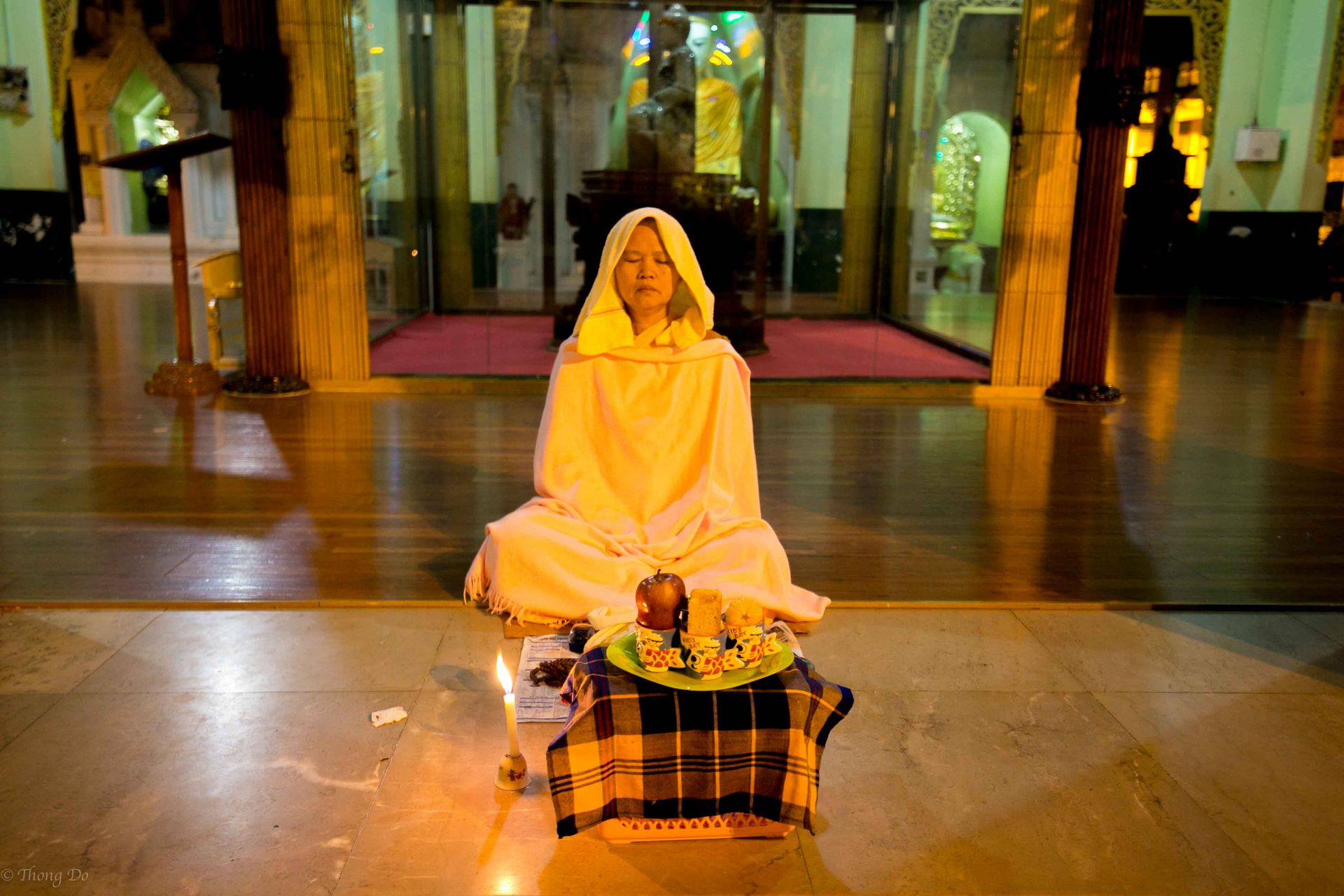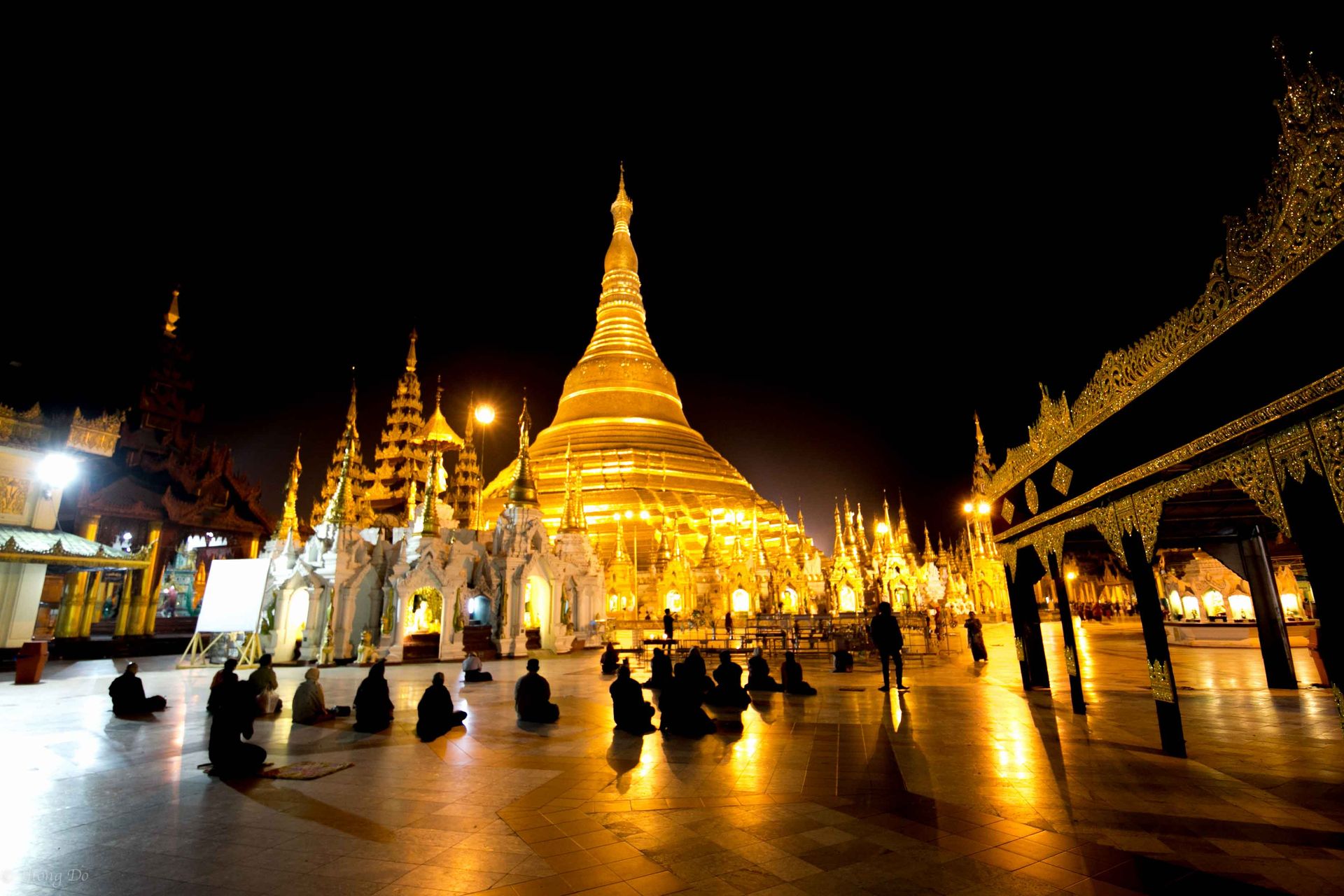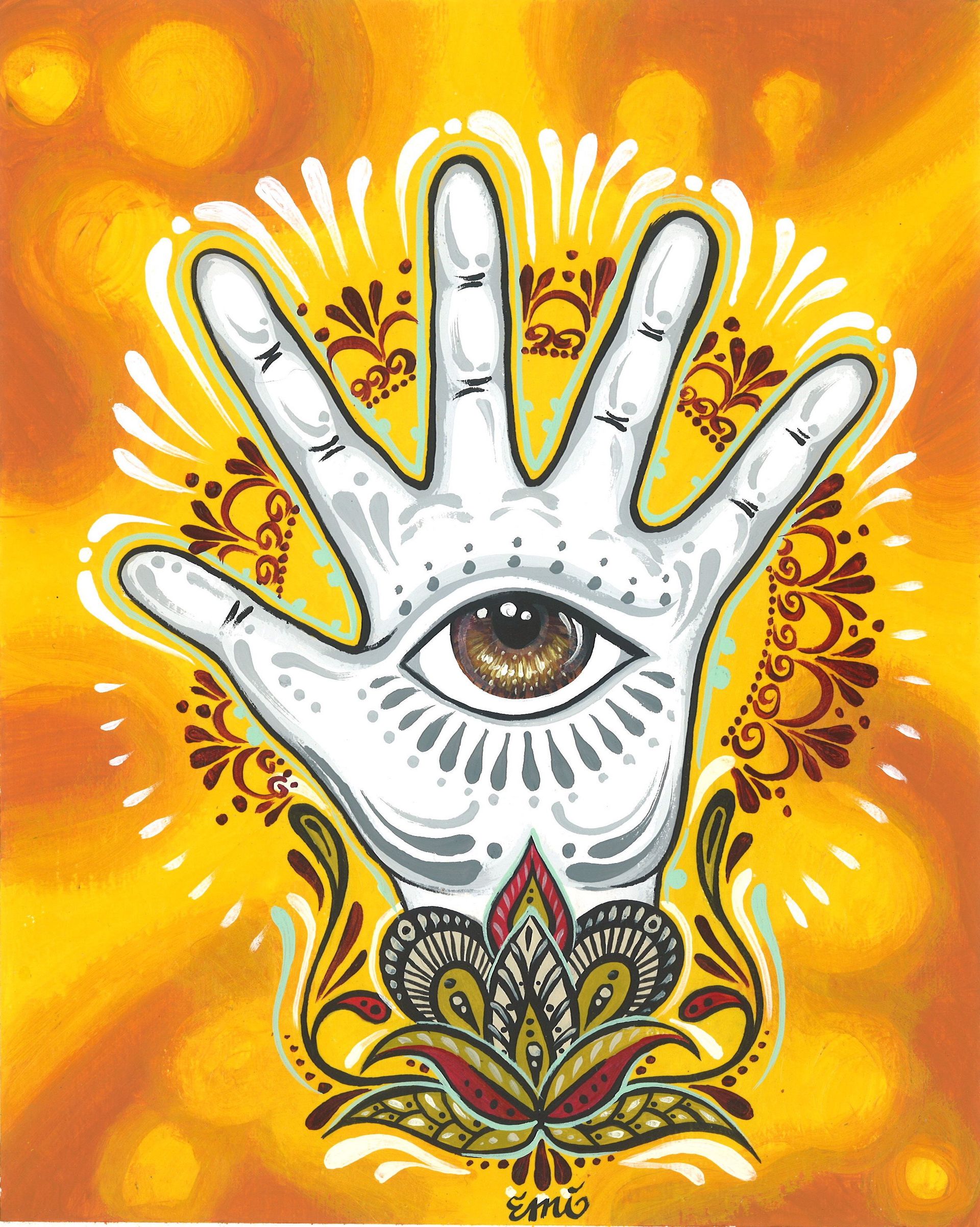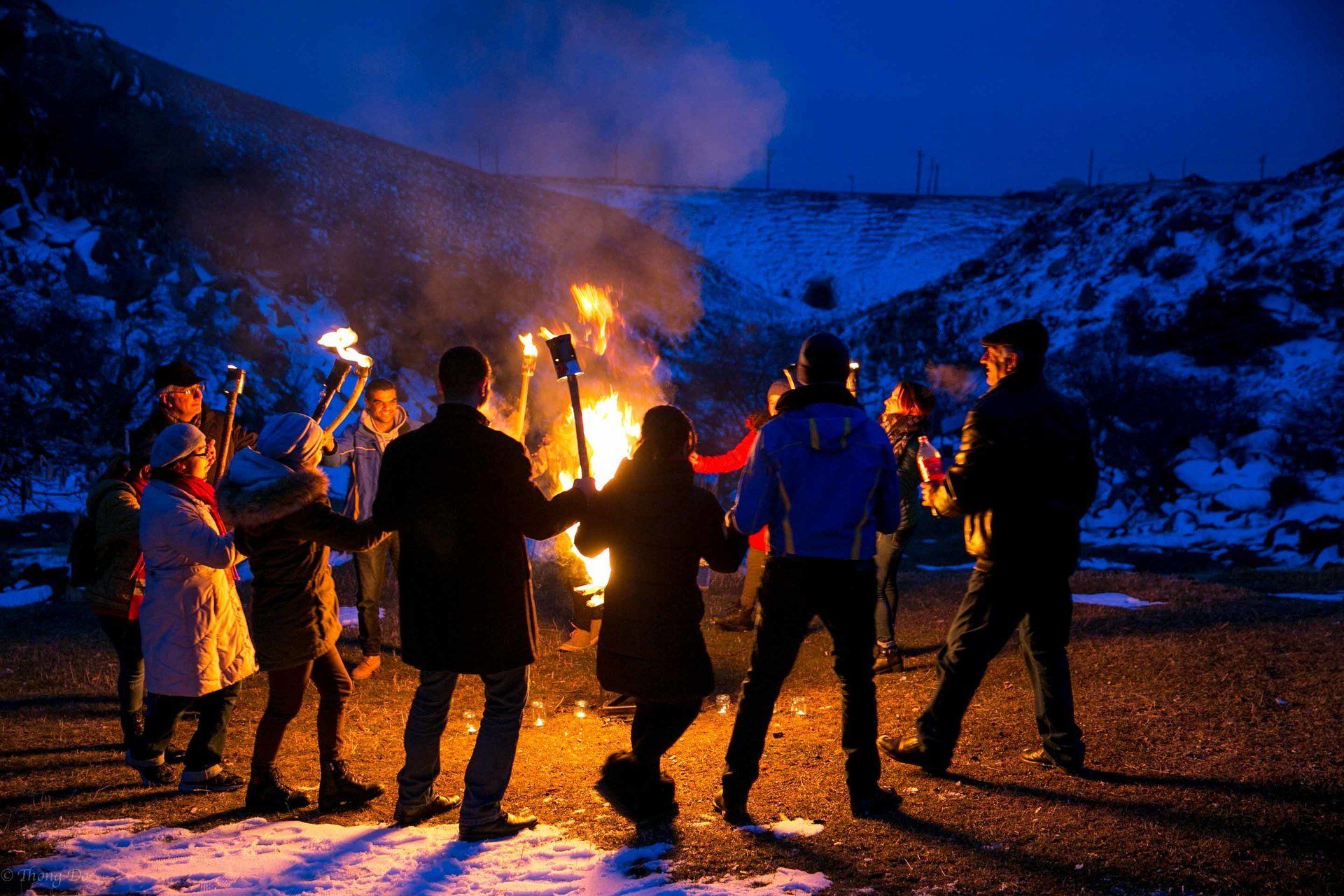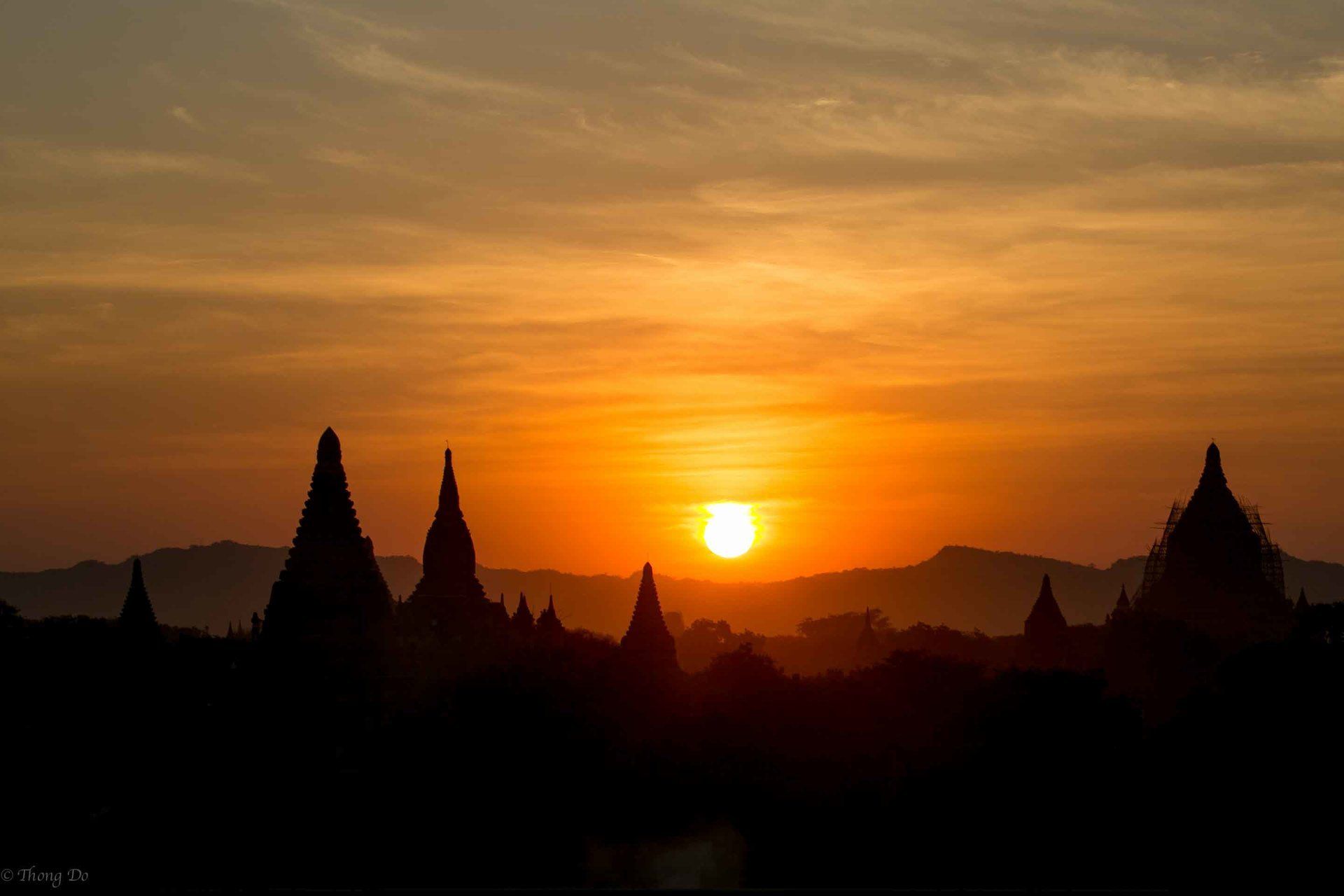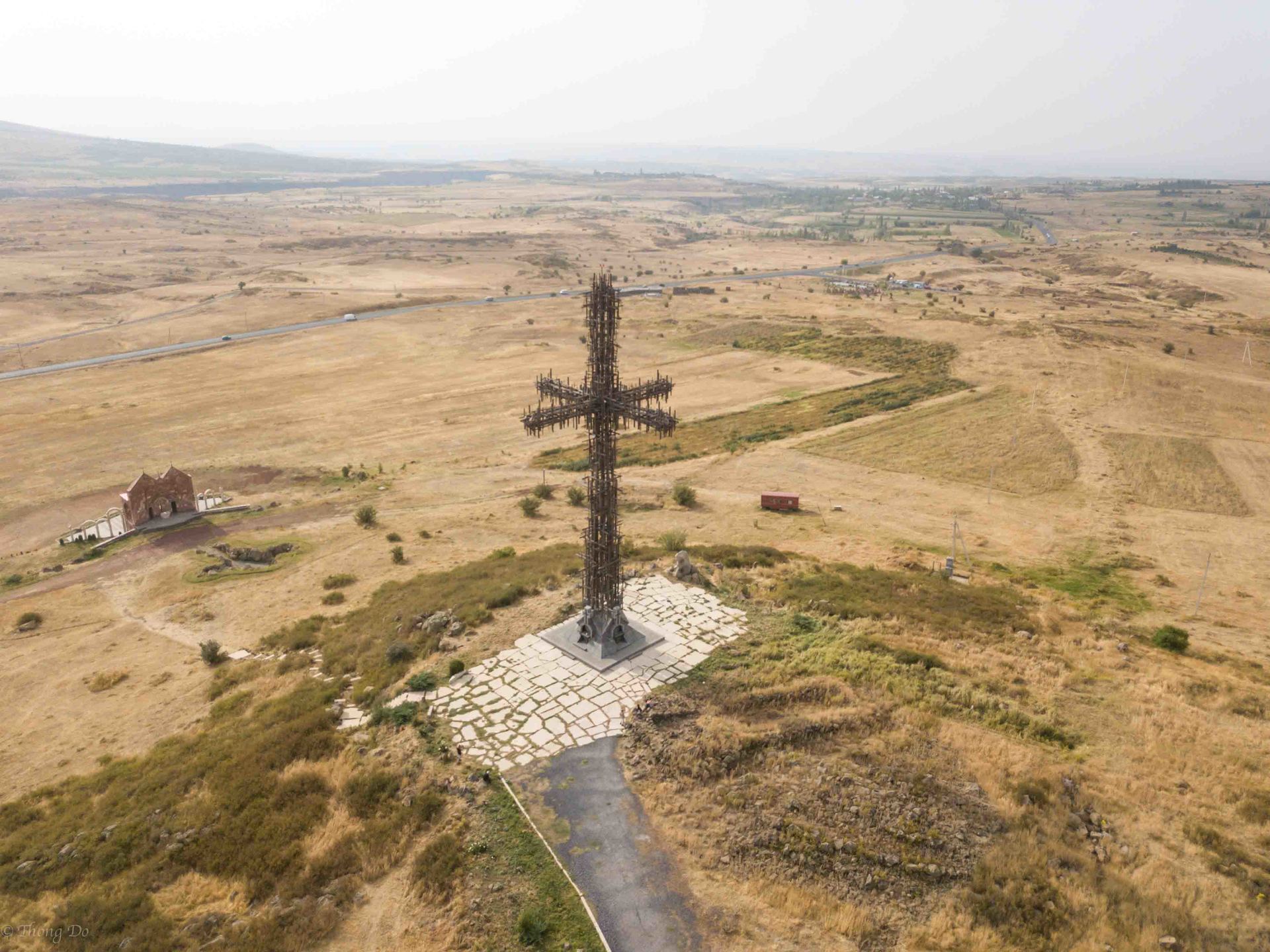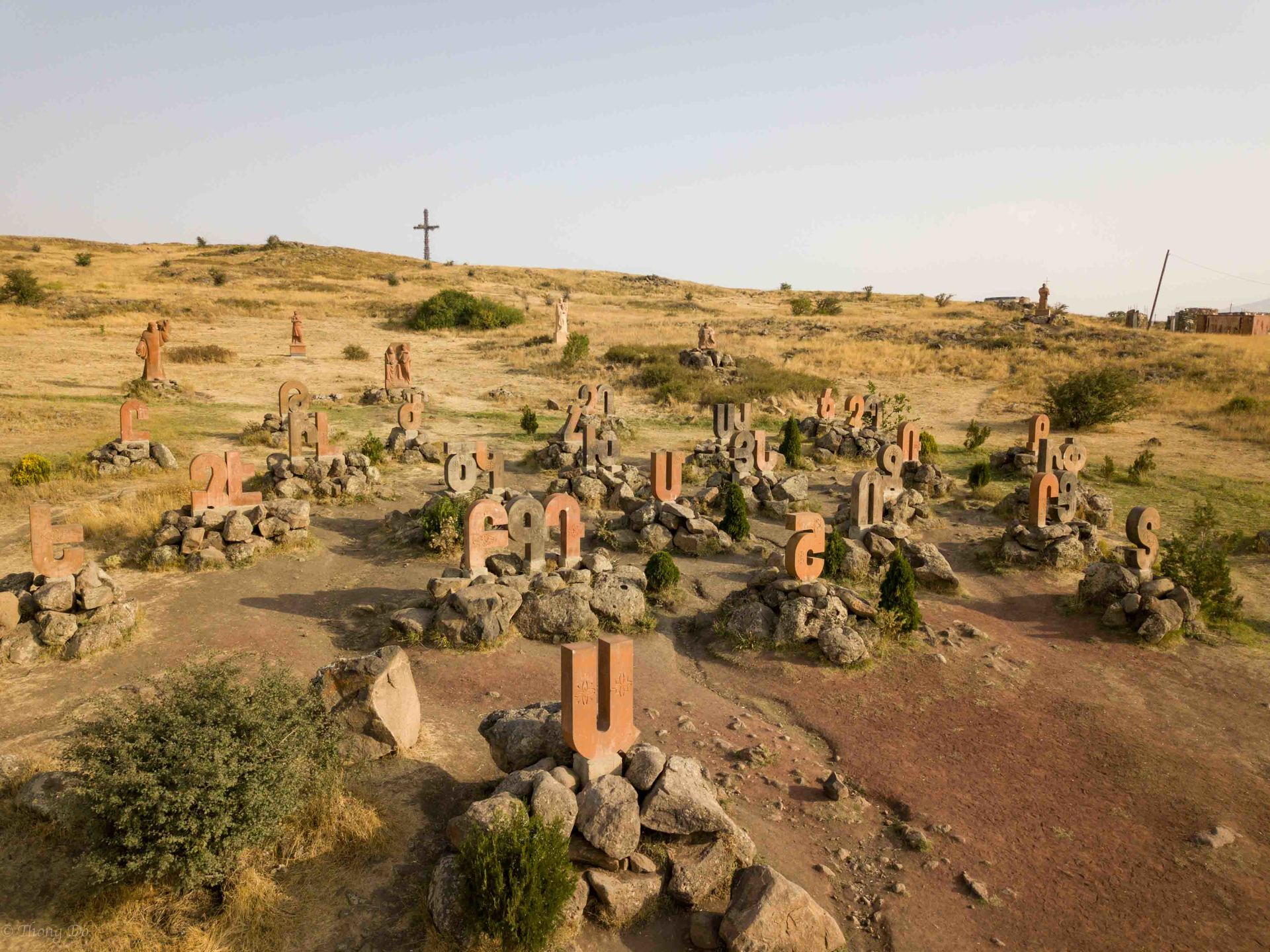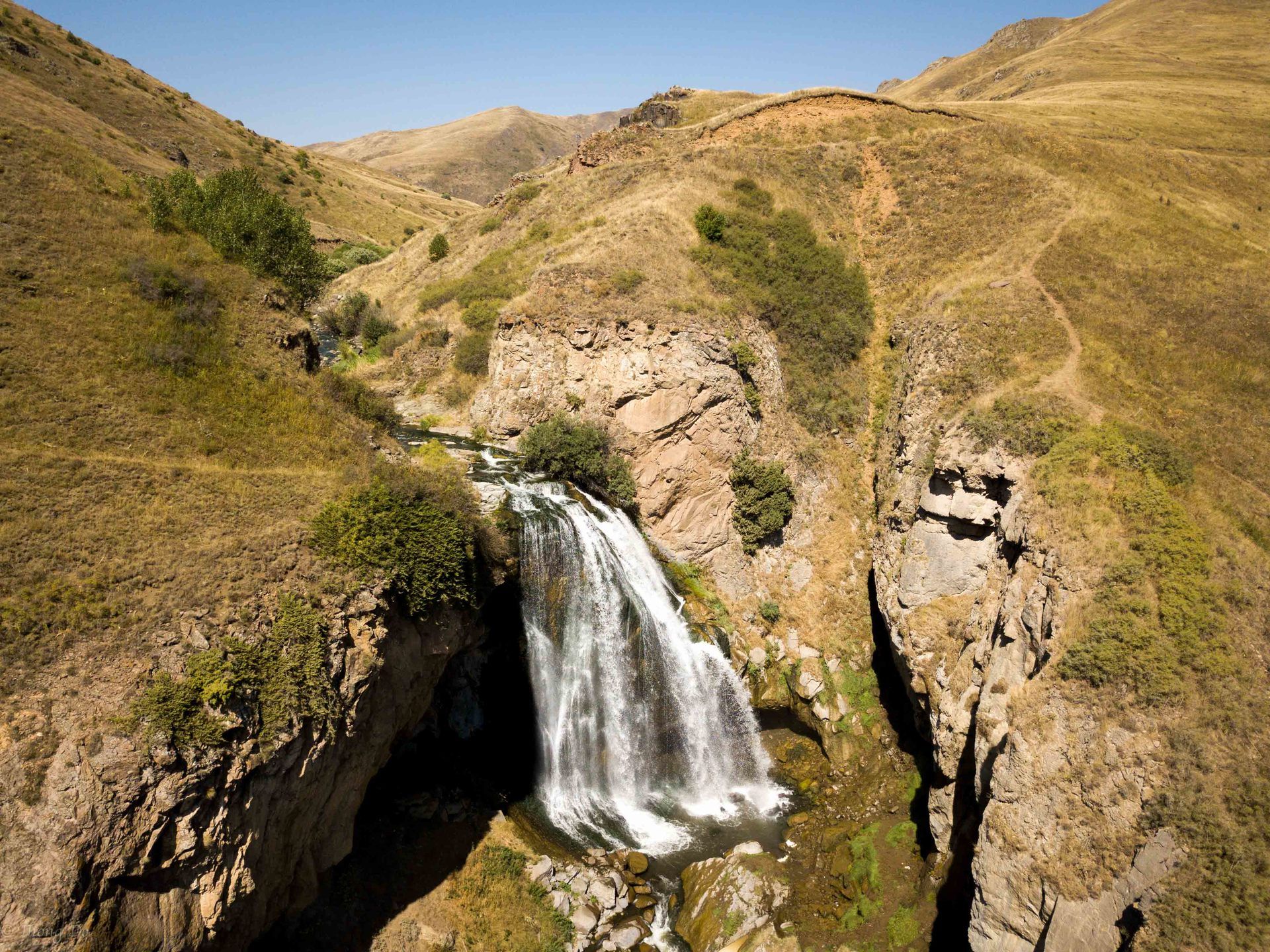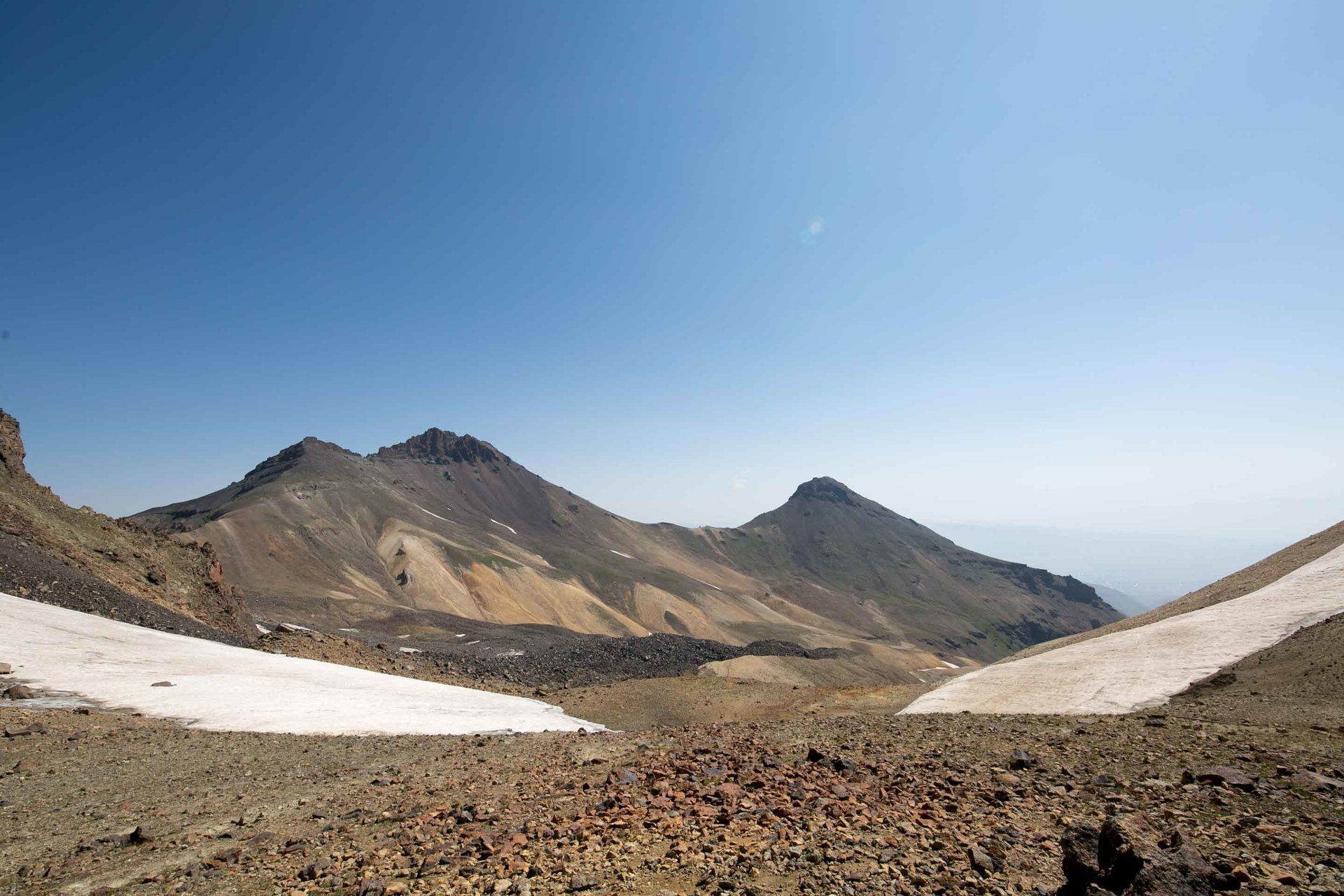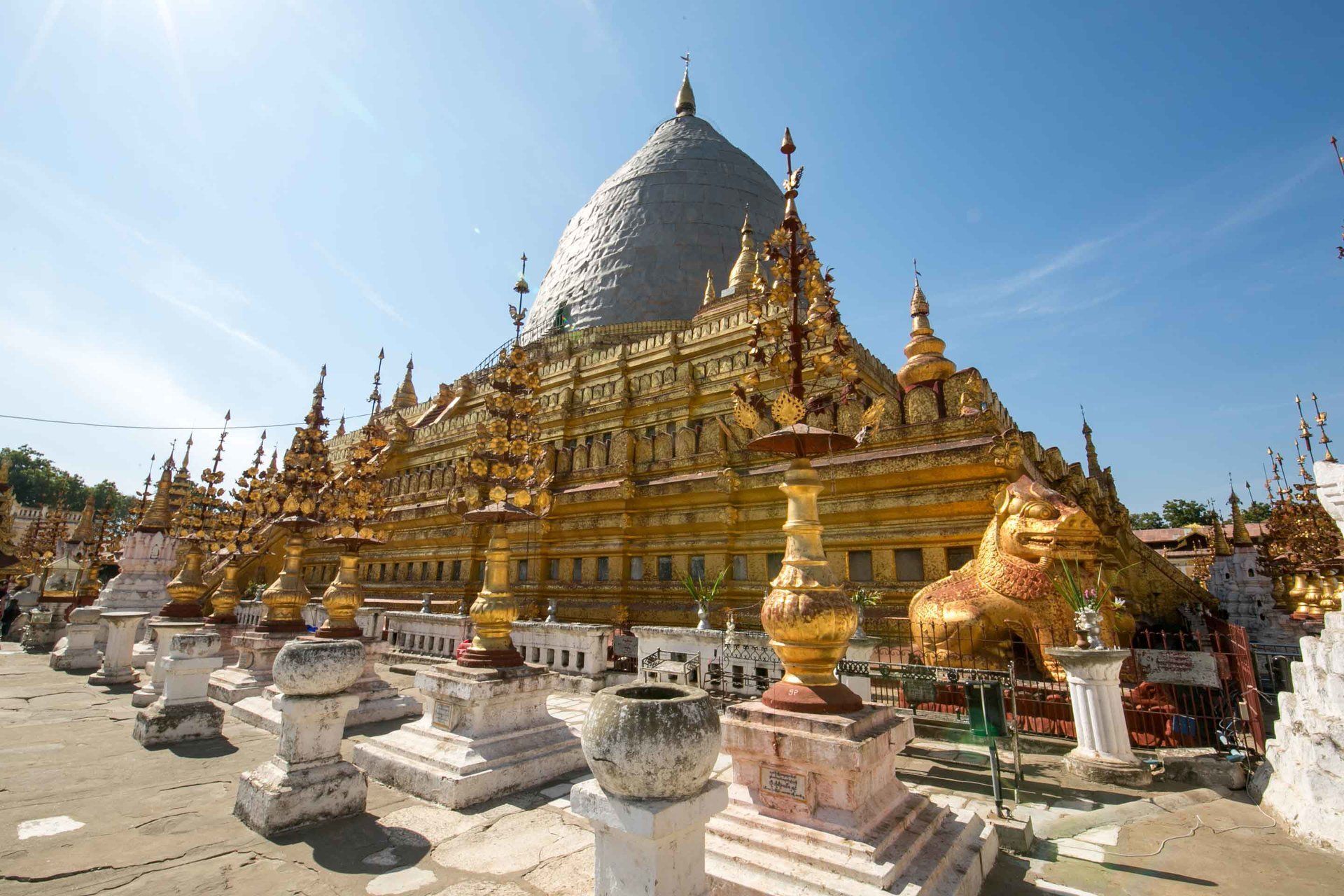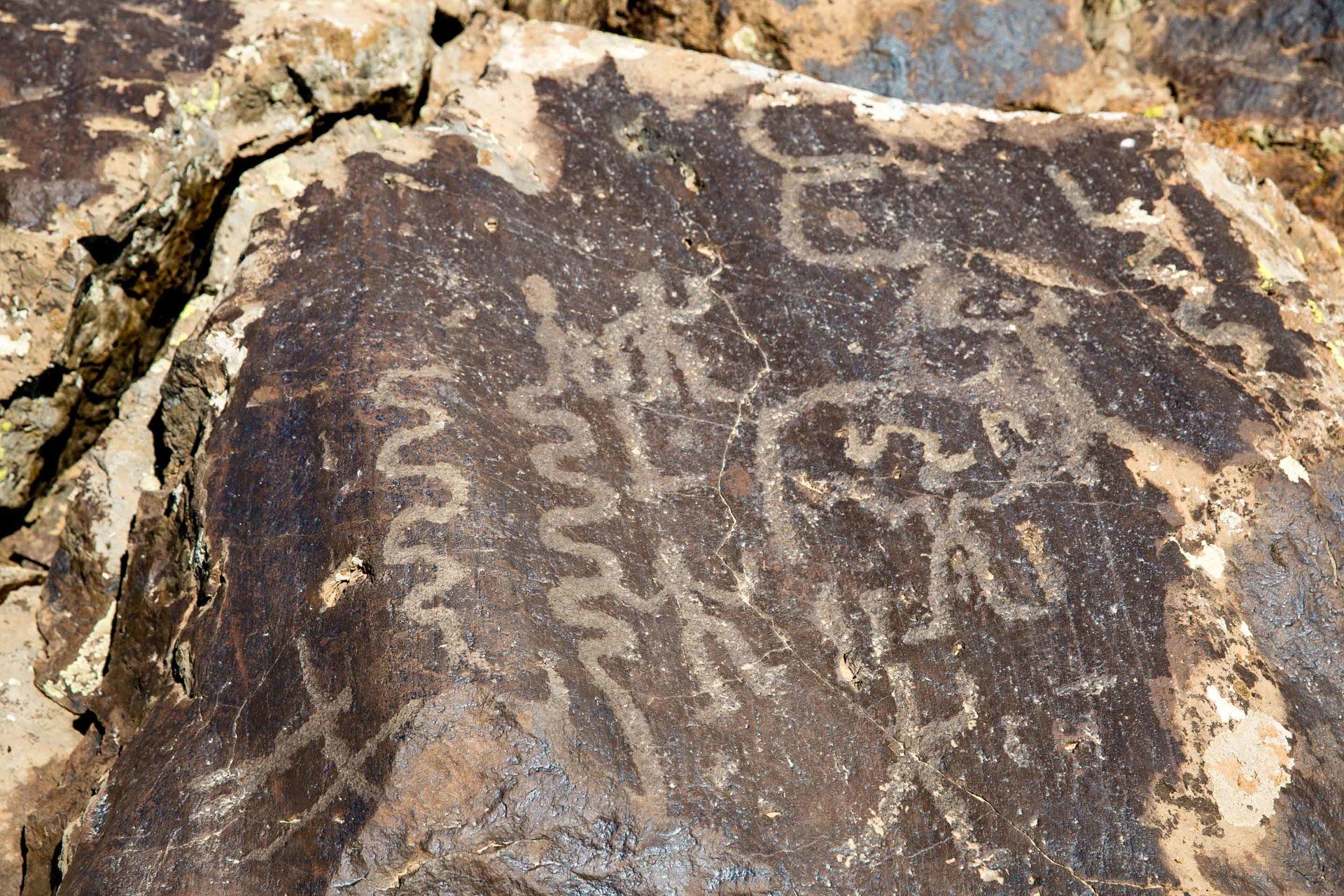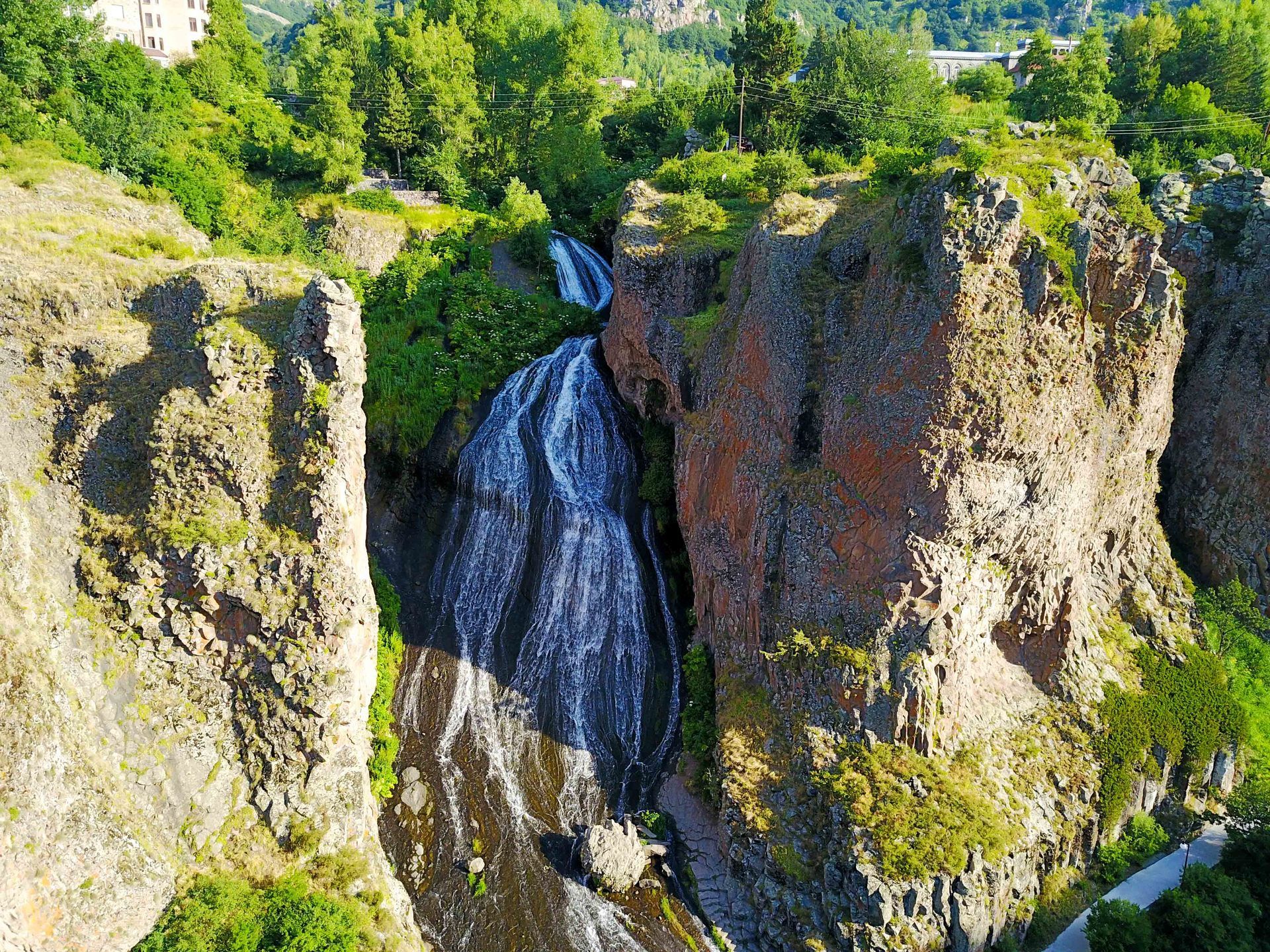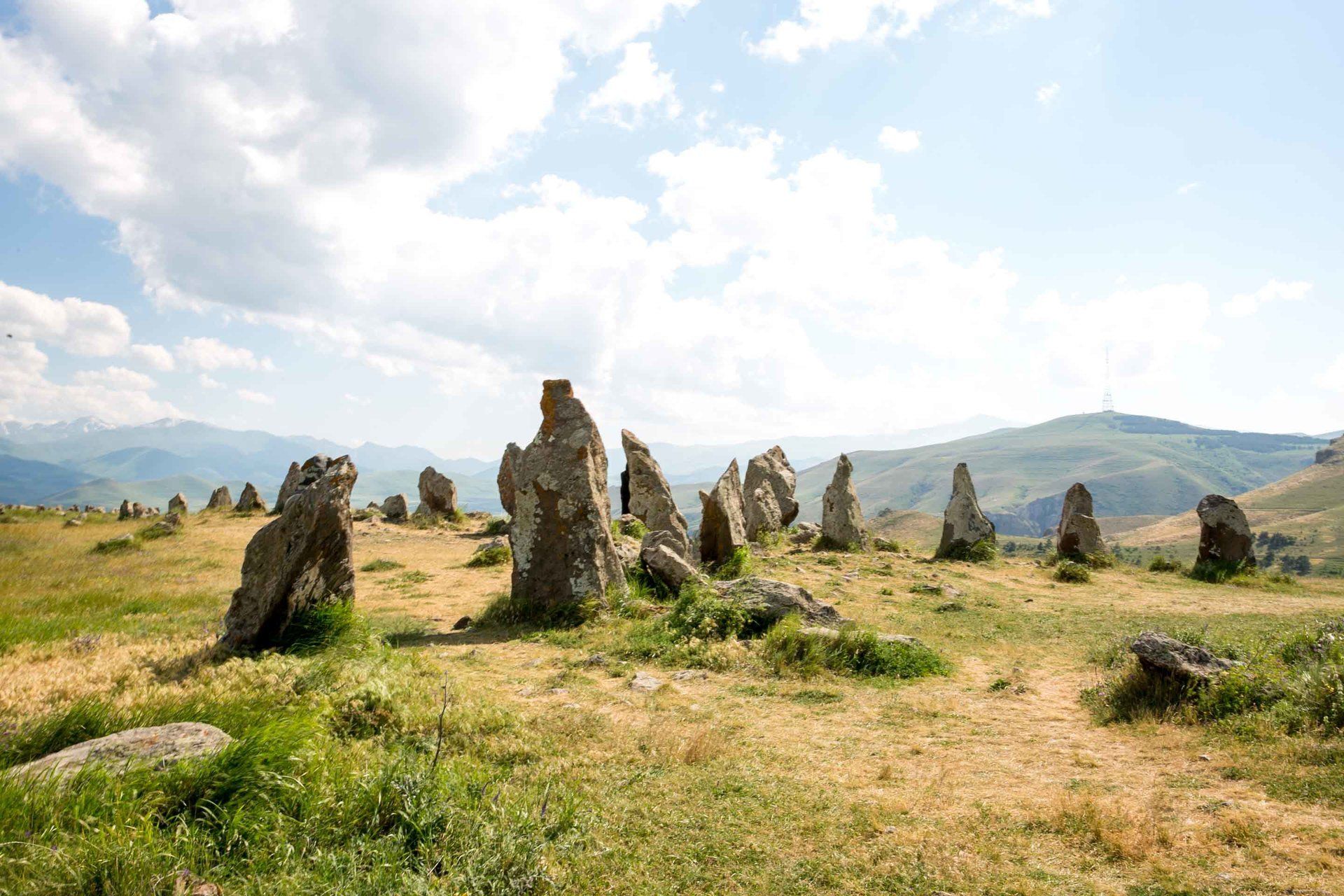What to see in Yangon, Myanmar: Part 1 The Shwedagon Pagoda
- By Thong Do
- •
- 05 Mar, 2017
- •
If you happen to be visiting the capital city of Yangon then the must see site you have to visit is the majestic Shwedagon Pagoda. No other site can symbolize the Myanmar culture and identity than this 2,500 year old monument. Situated just west of the Royal Lake on the Singuttara Hill this complex is 114 acres of spiritual vibes and impressive structures. This is by far the most sacred and ornate Buddhist site for the people of Myanmar. I’ve been fortunate enough to visit Chiang Mai, the spiritual center for neighboring Thailand, but this area is far grander in scale. Starting off at over 8 meters the Shwedagon Pagoda has survived natural disasters, changes in leadership, and foreign invaders and now stands over 99 meters and filled with more precious stones and gold than a jewelry market.
The Shwedagon Pagoda complex is open from 4am-10pm daily and the entrance fee is 8,000 Kyats. There are multiple entrances inside this complex and it just depends on how scenic you want the route to be. You can take any of the 4 massive stairways called zaungdan to the top. They are filled with various stalls selling religious paraphernalia, candles, incense, Buddhas, gold leafs, and regular souvenirs. If you have a physical disability they also have elevators for accessibility also (located in the southern entrance). There are strict dress codes since it’s a religious complex. Shorts must cover the knees and miniskirts or shirts/blouses that show too much skin must be covered up. They will provide outer clothing if needed.
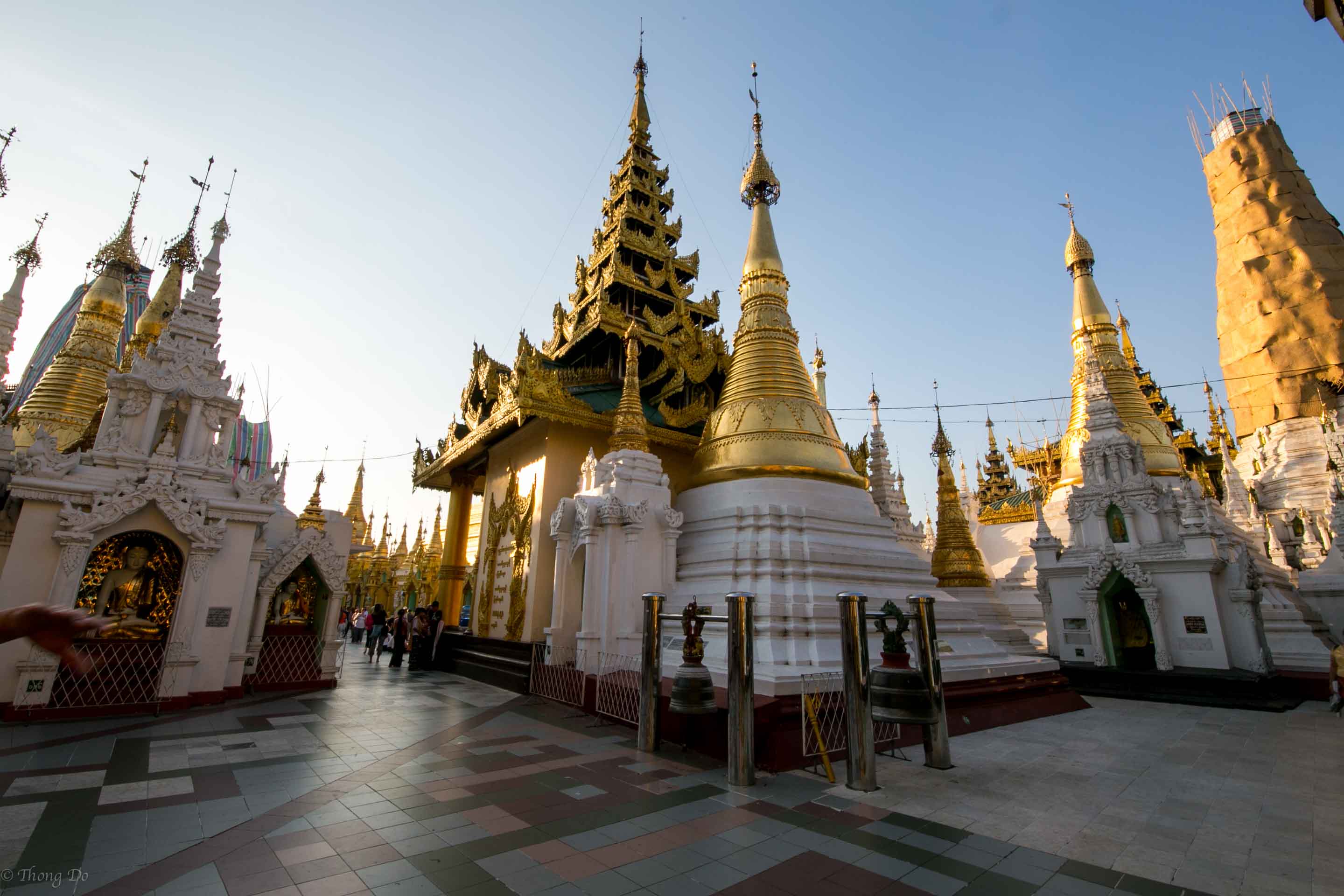
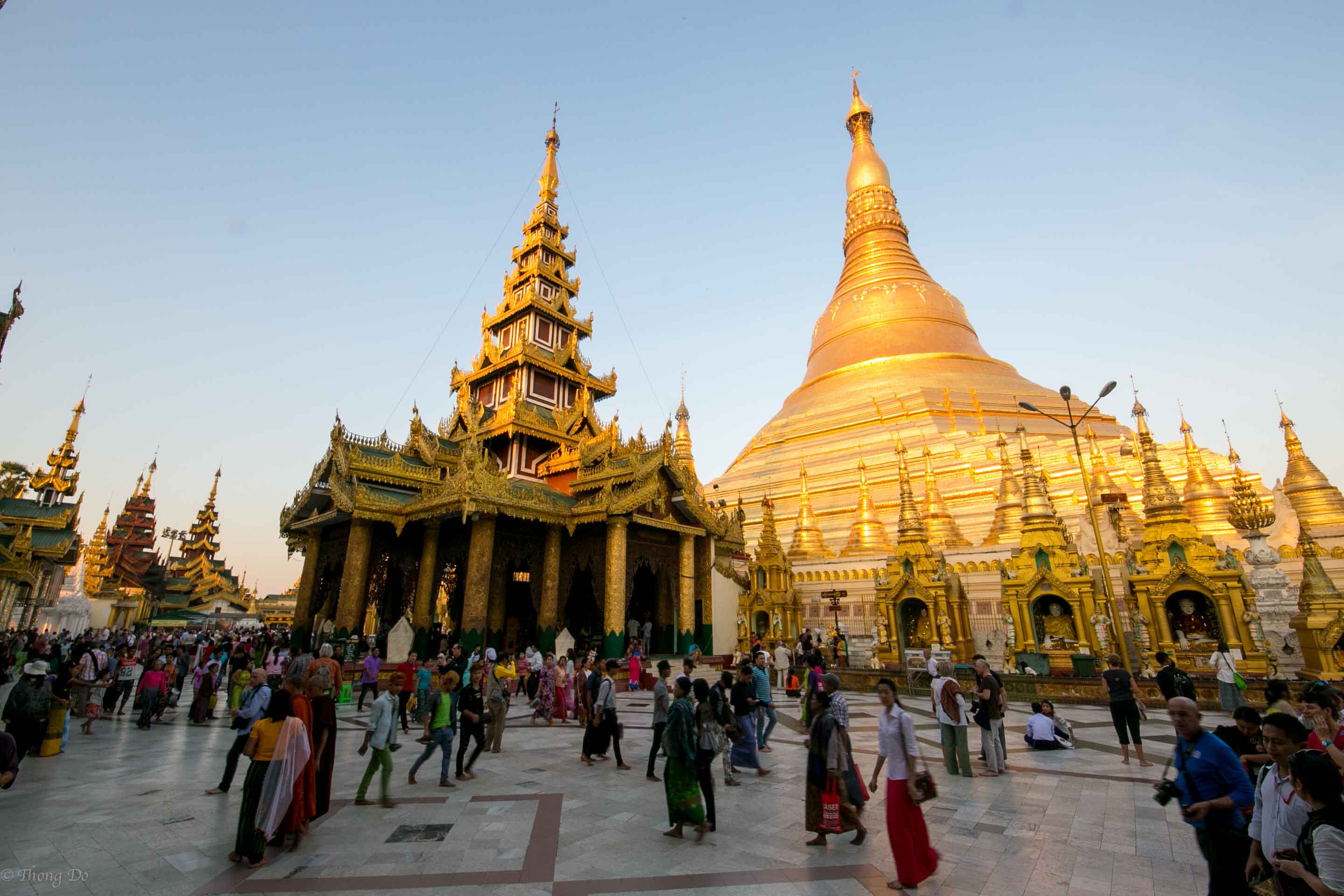
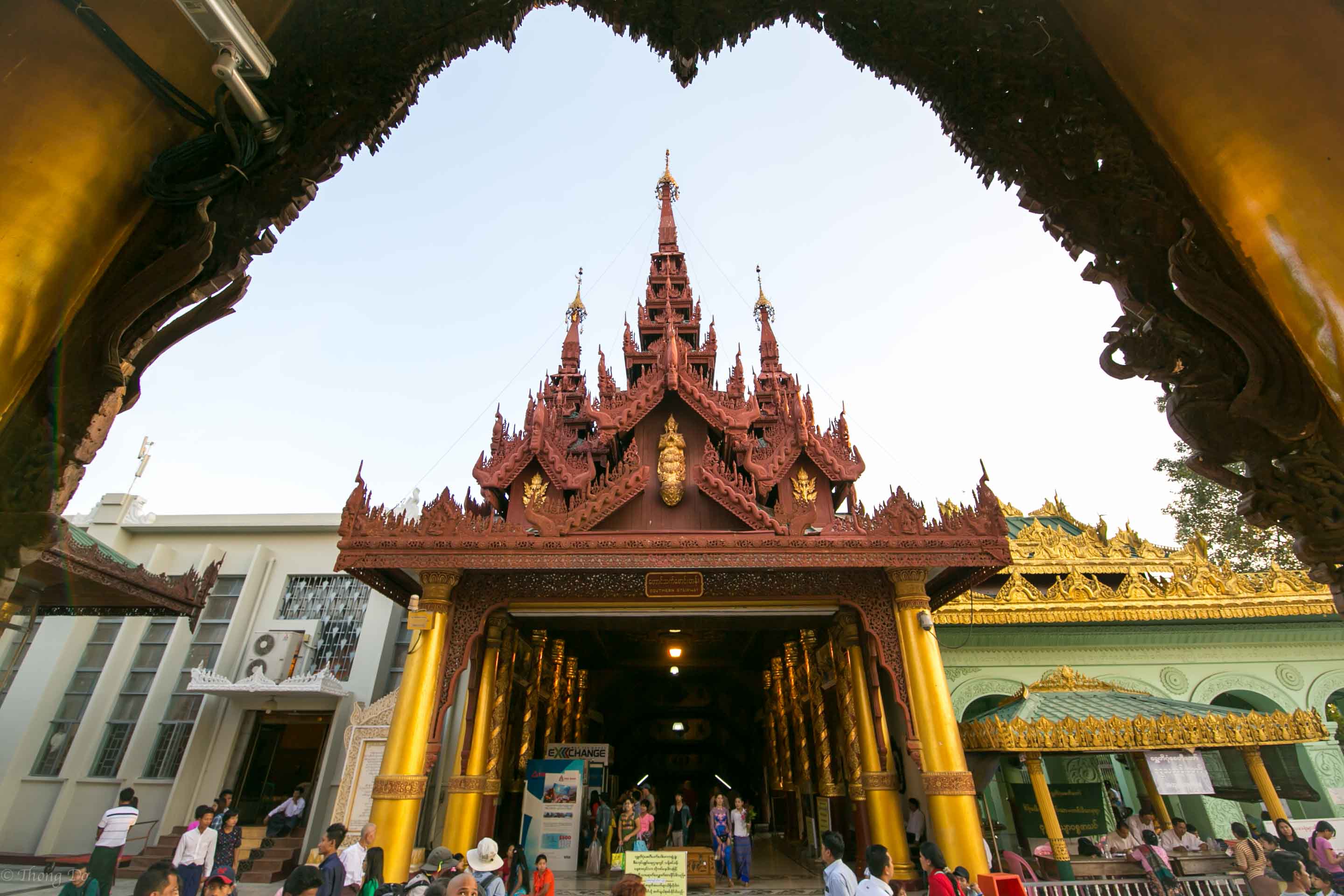
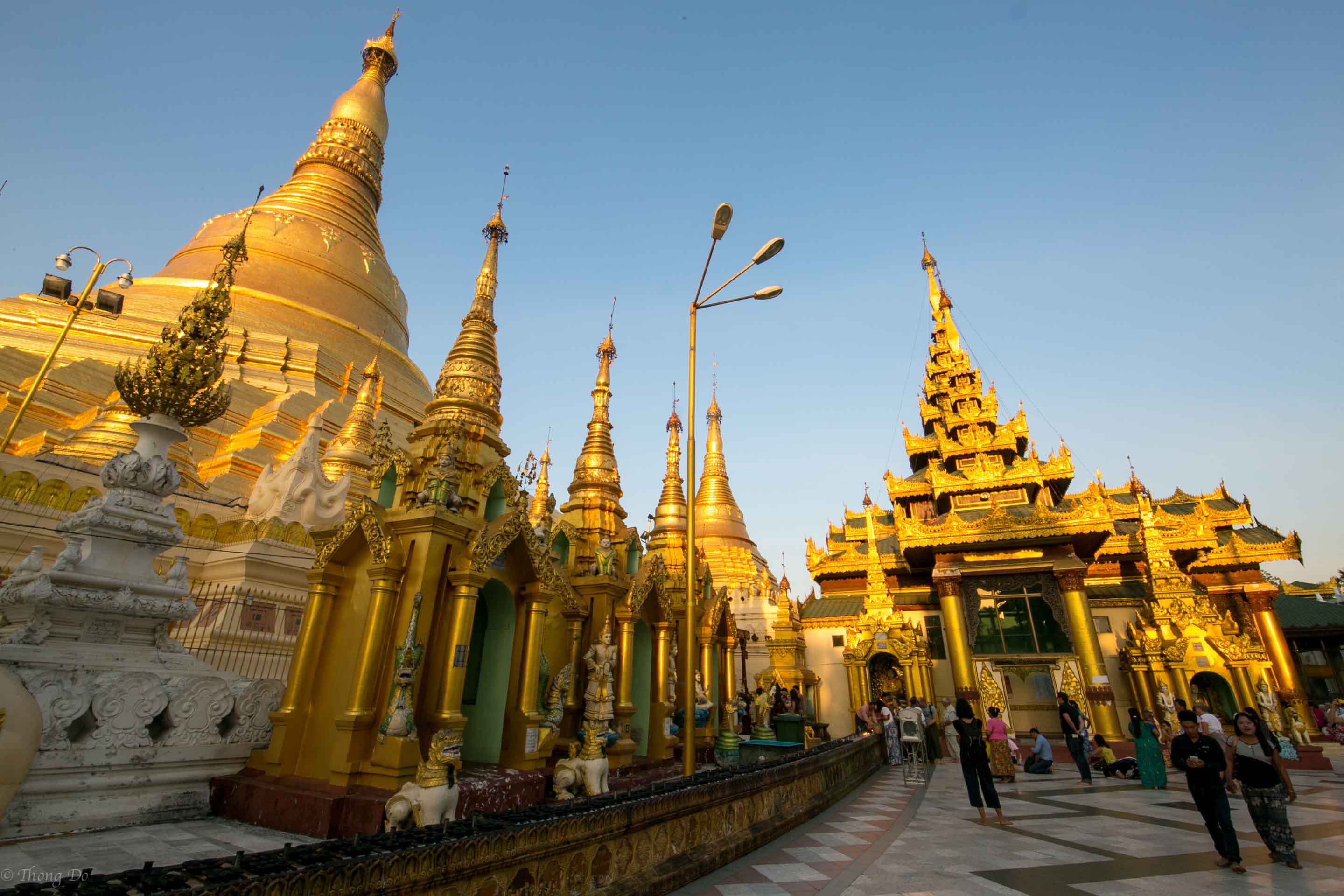
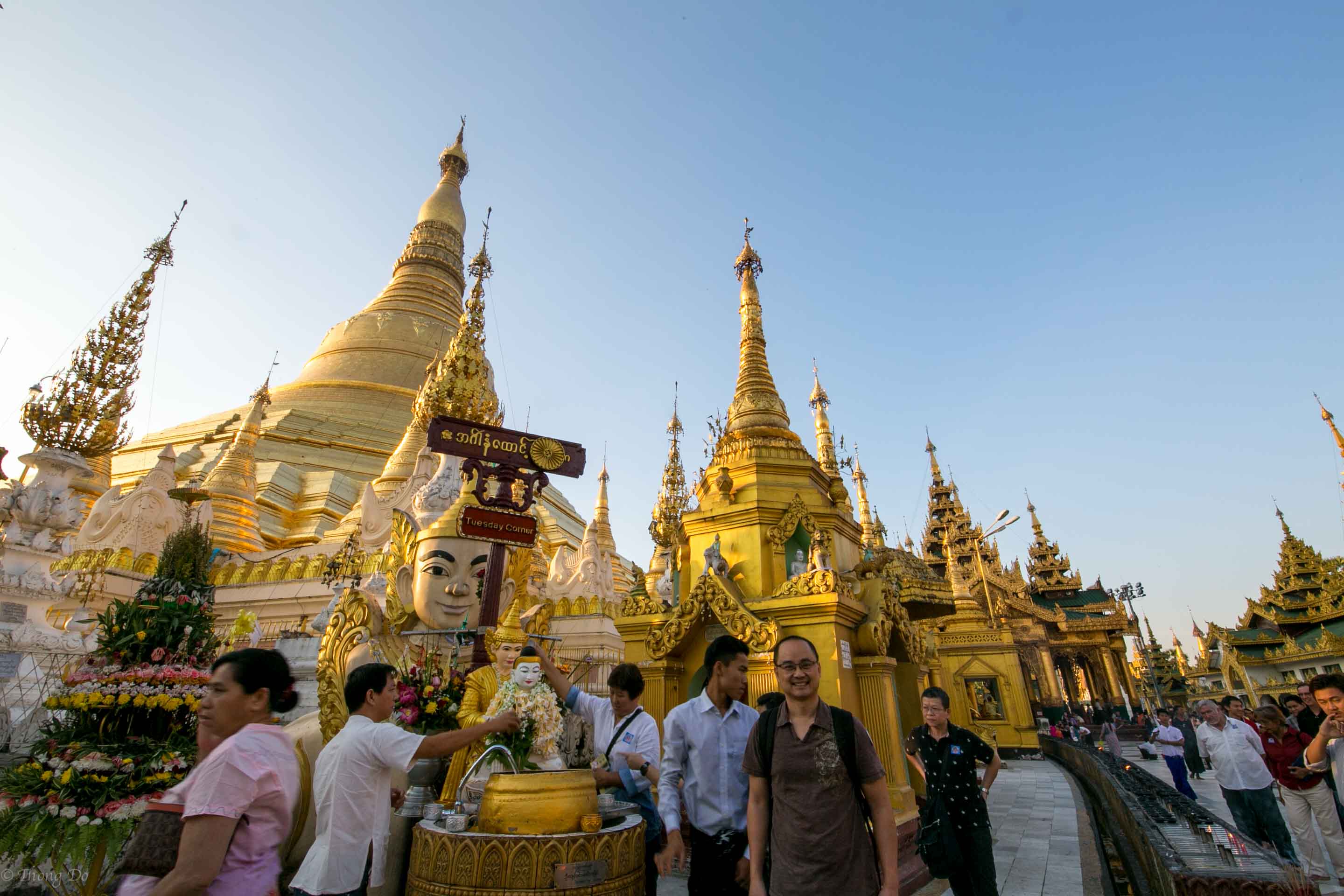
I entered through the north and south and the first thing I noticed was the famous Mahabodhi Tree. This tree was grown from a cutting of the tree under which the Buddha sat and found enlightenment. I arrived late in the afternoon and it was still crowded and busy. The only way to describe the place was the first time being in Las Vegas and seeing all the lights and ornate structures with each trying to outdo the one next to it. The Middle Terrace is the area where you see most of the decorated shrines, stupas, pavilions, and statues. It’s an amazing site to see and sensory overload is expected.
The design of the Middle Terrace is to get you to walk in a clockwise manner that replicates the movement of the heavens. There is a planetary post corresponding to the day of your birth. In Burmese astrology, there are eight days in total with Wednesday being divided into morning and evening. Each day is linked with a different animal: a winged griffin for Sunday, a tiger for Monday, a lion for Tuesday, a tusked elephant for Wednesday morning, a tuskless elephant for Wednesday evening, a mouse for Thursday, a guinea pig for Friday, and finally a mythical snakelike dragon for Saturday. The larger statues located behind the various planetary posts are the guardian spirits called nats.
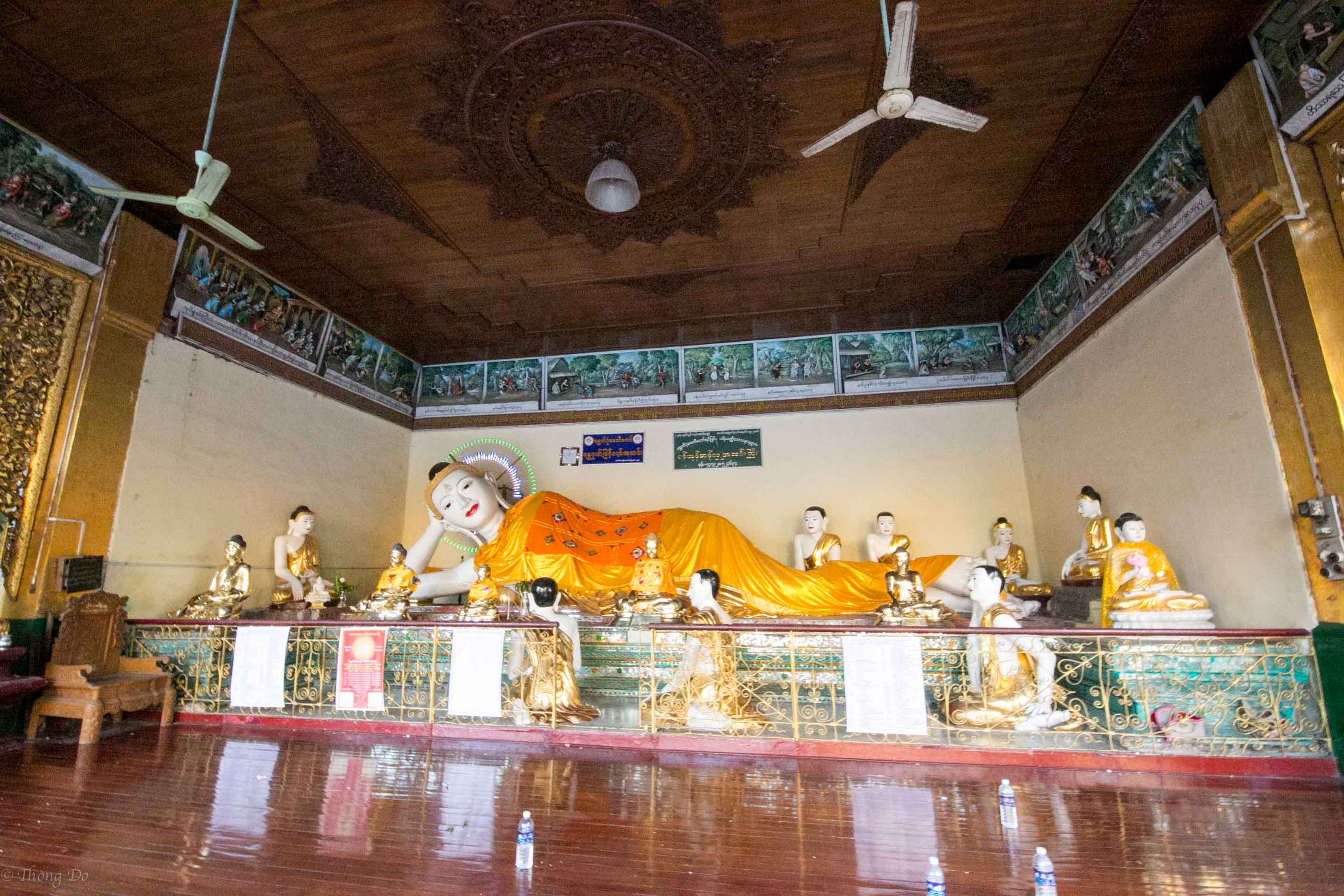
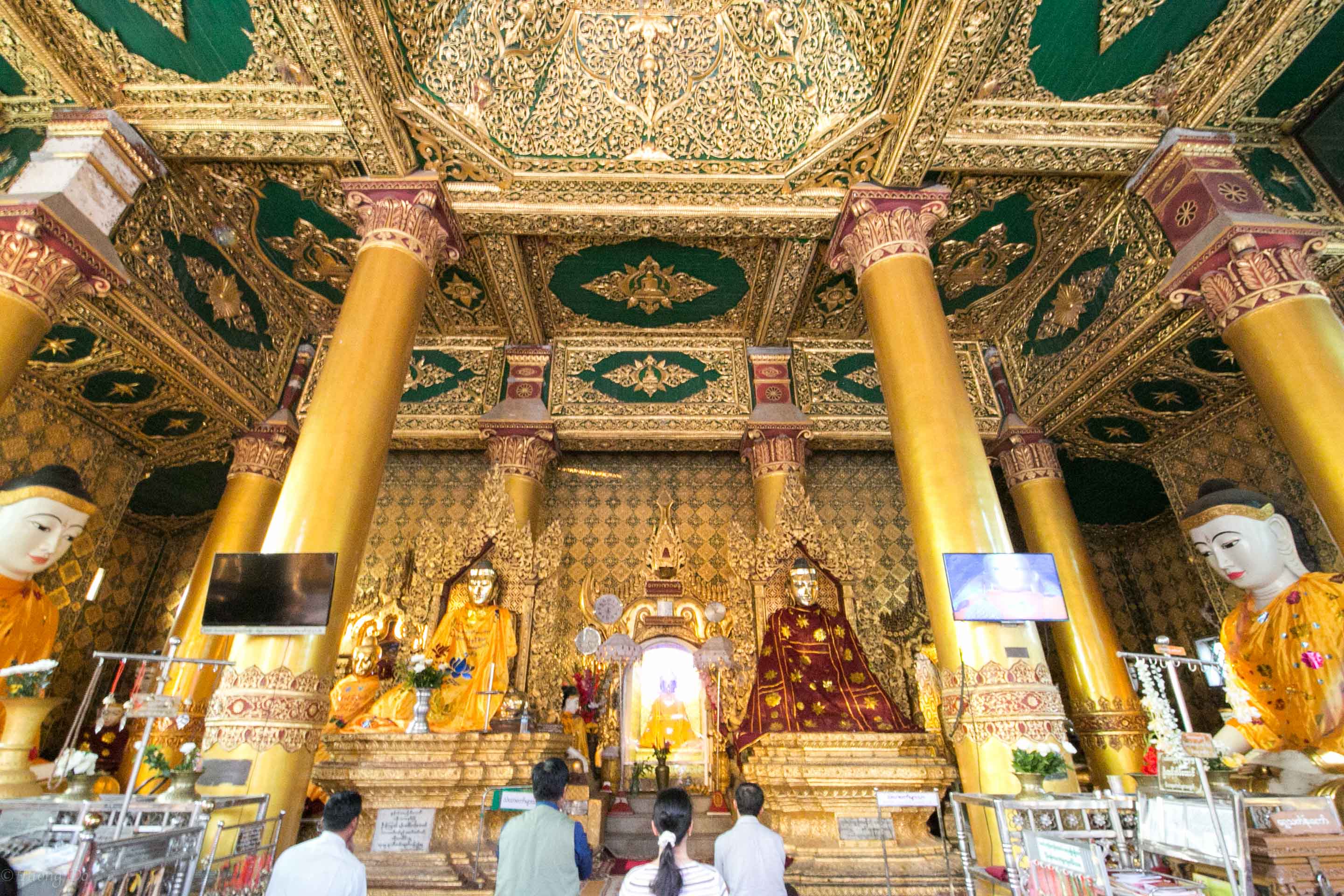

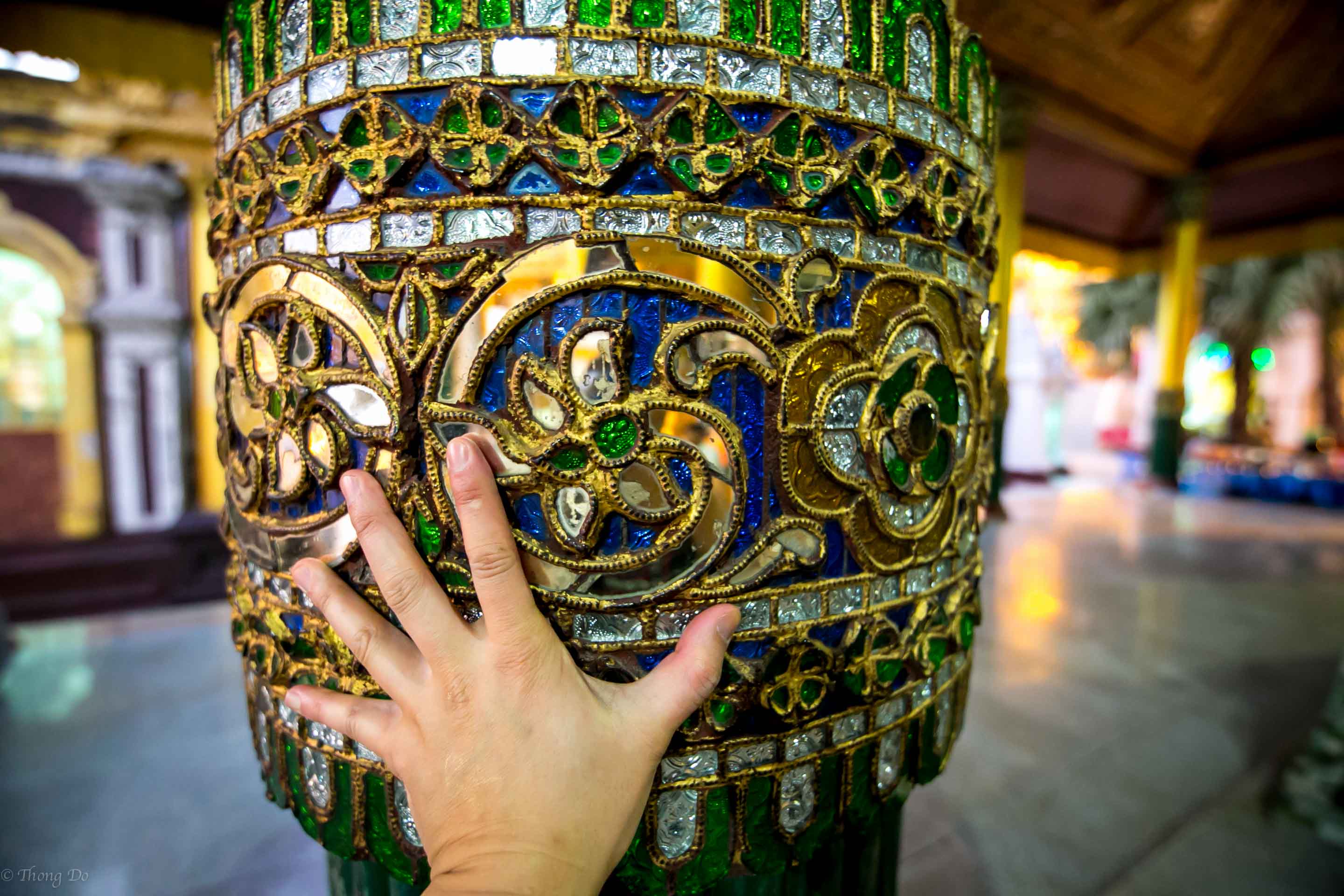
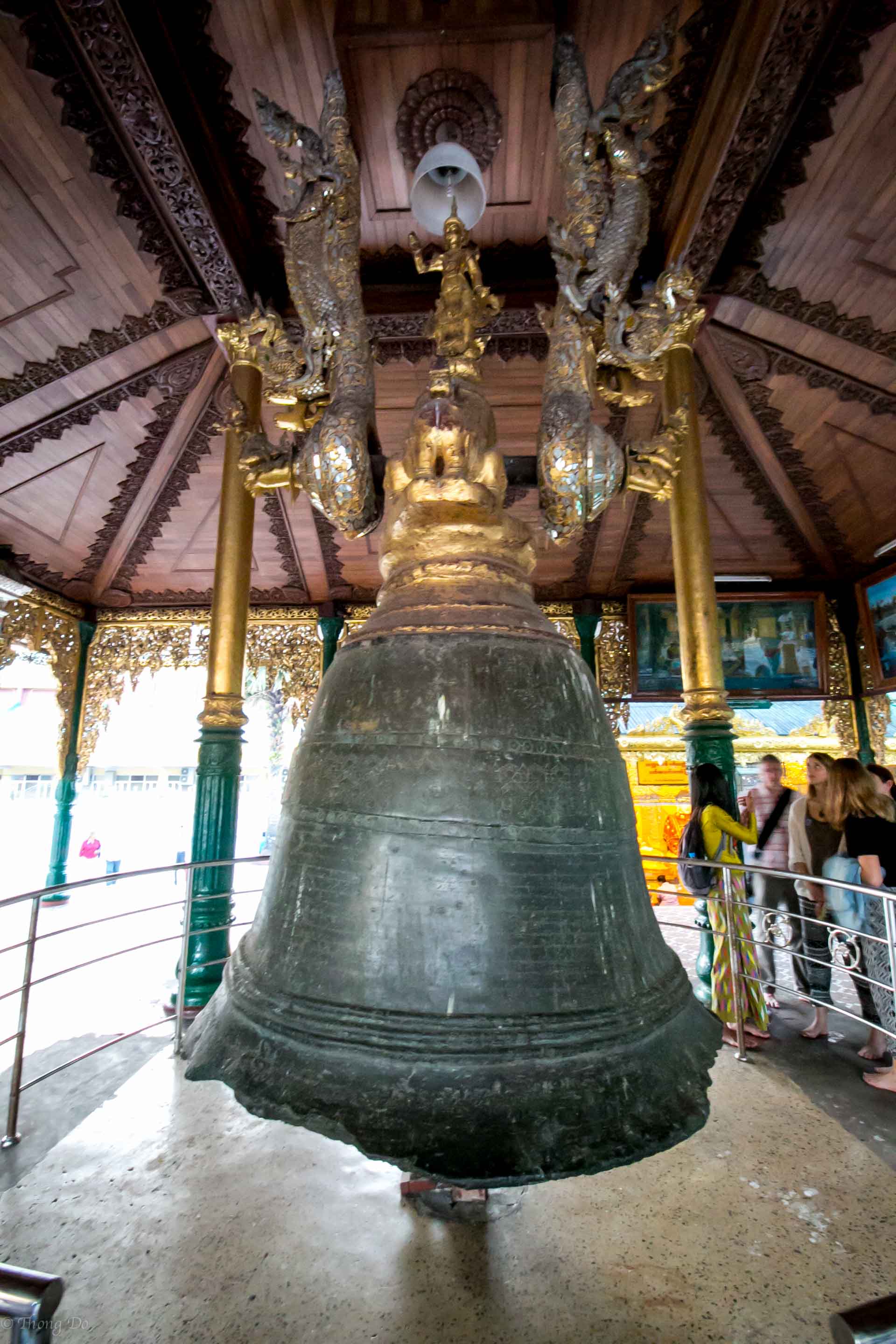
The area that attracts the most attention is called the Wish Fulfilling Place. This is located in the northwestern area and the devout come here to say a prayer and meditate. The devout kneel towards the direction of The Great Stupa and I saw hundreds when I walked by here. The mood was calm and everyone was at ease here.
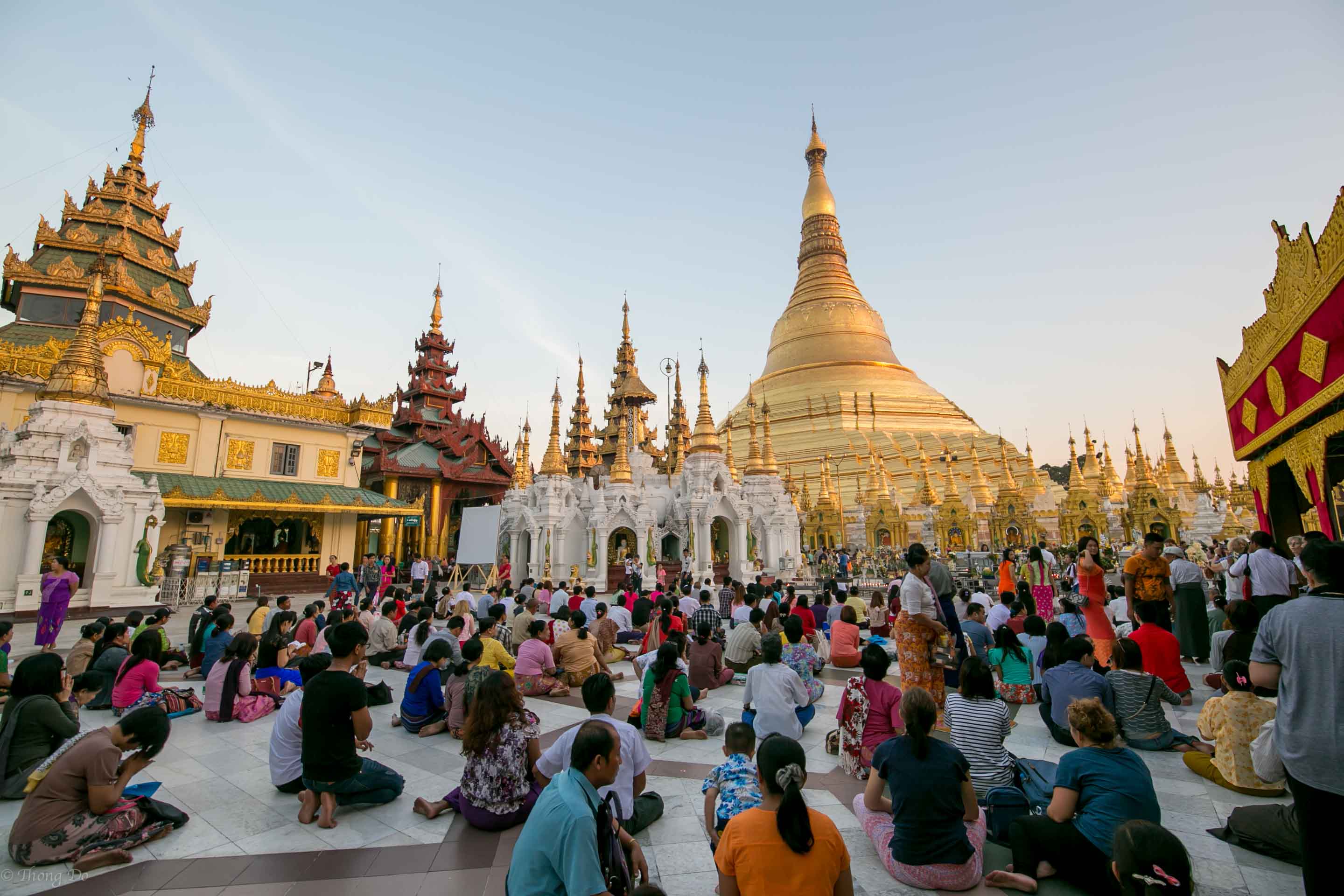
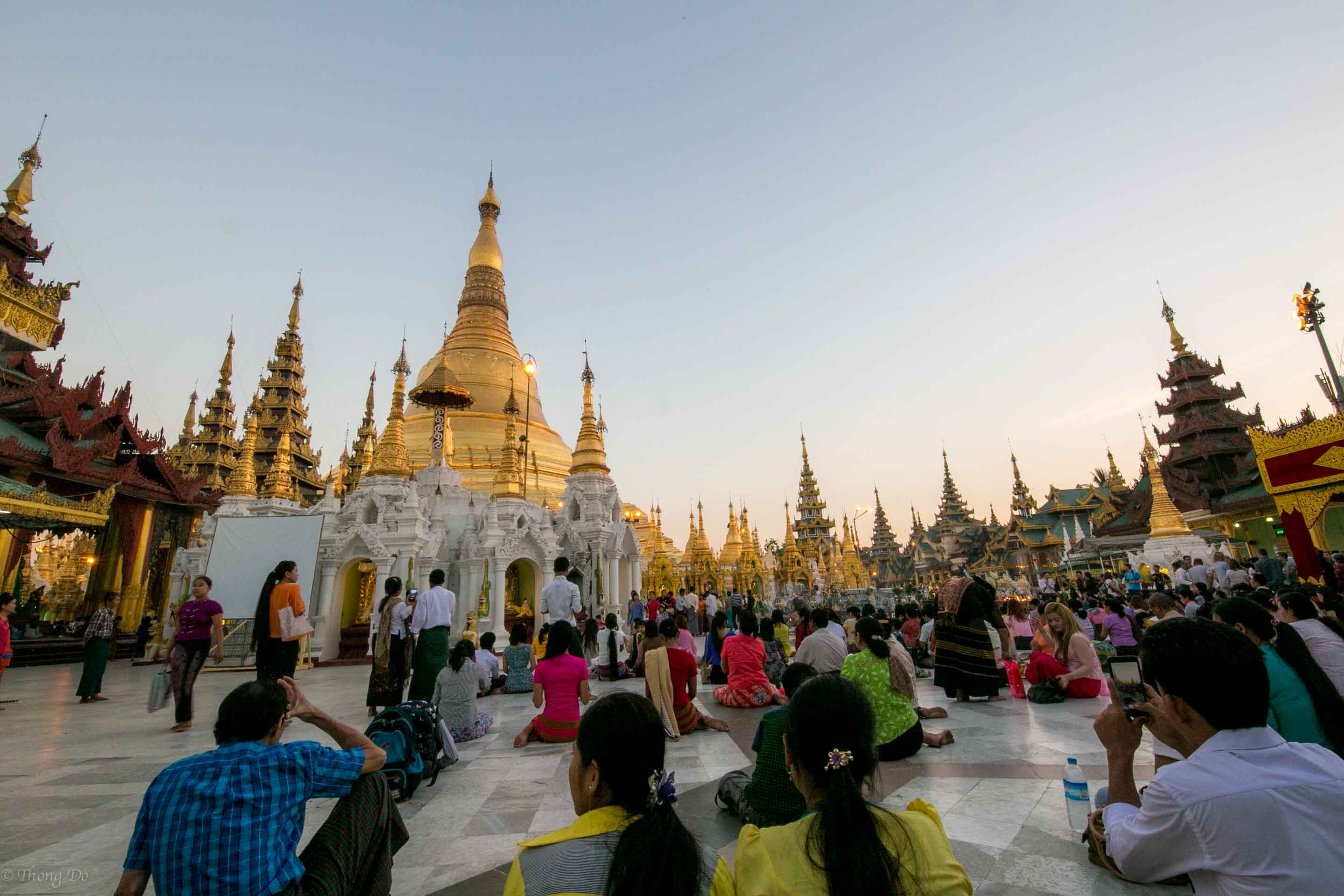
The main attraction that cannot be missed is the Great Stupa itself. Standing at 99 meters or 325 feet this magnificent structure is believed to be 2,500 years old and holds precious relics and the reason why so many Buddhists make a pilgrimage here. Surviving natural disasters and colonial rule the Great Stupa is covered with gold leaf on the base and the banana bud at the top is covered with 13,000+ solid gold plates. Surrounding the Great Stupa is 64 mini pagodas. The entrance into the upper terraces is strictly forbidden to the public and only monks can enter this area. This area has also served as a rallying point for political reform in Myanmar. Aung San Suu Kyi, the face for Myanmar’s pro-democracy struggle addressed a large crowd here in the late 1980s and in 2007 the Great Stupa was occupied by protesting monks during their Saffron Revolution.
The Great Stupa has ten unique sections to it. It has a base, three terraces called “Pyisayan”, the “Khaung Laung” due to its bell shape, the “Baung Yit” with the distinct embossed bands, the “Thabeik” or Monk’s Food Bowl, the “Kya-lan” an ornamental lotus flower, the “Hngnet Pyaw-Bu” banana bud, the “Hti” the umbrella, the “Hngetmana” the flag shaped vane which revolves around the direction of the wind, and finally the “Seinbu” diamond bud. The “Hti” and “Hngetmana”, and the “Seinbu” are decorated with 3,154 gold bells, 79, 569 diamonds and other precious stones.
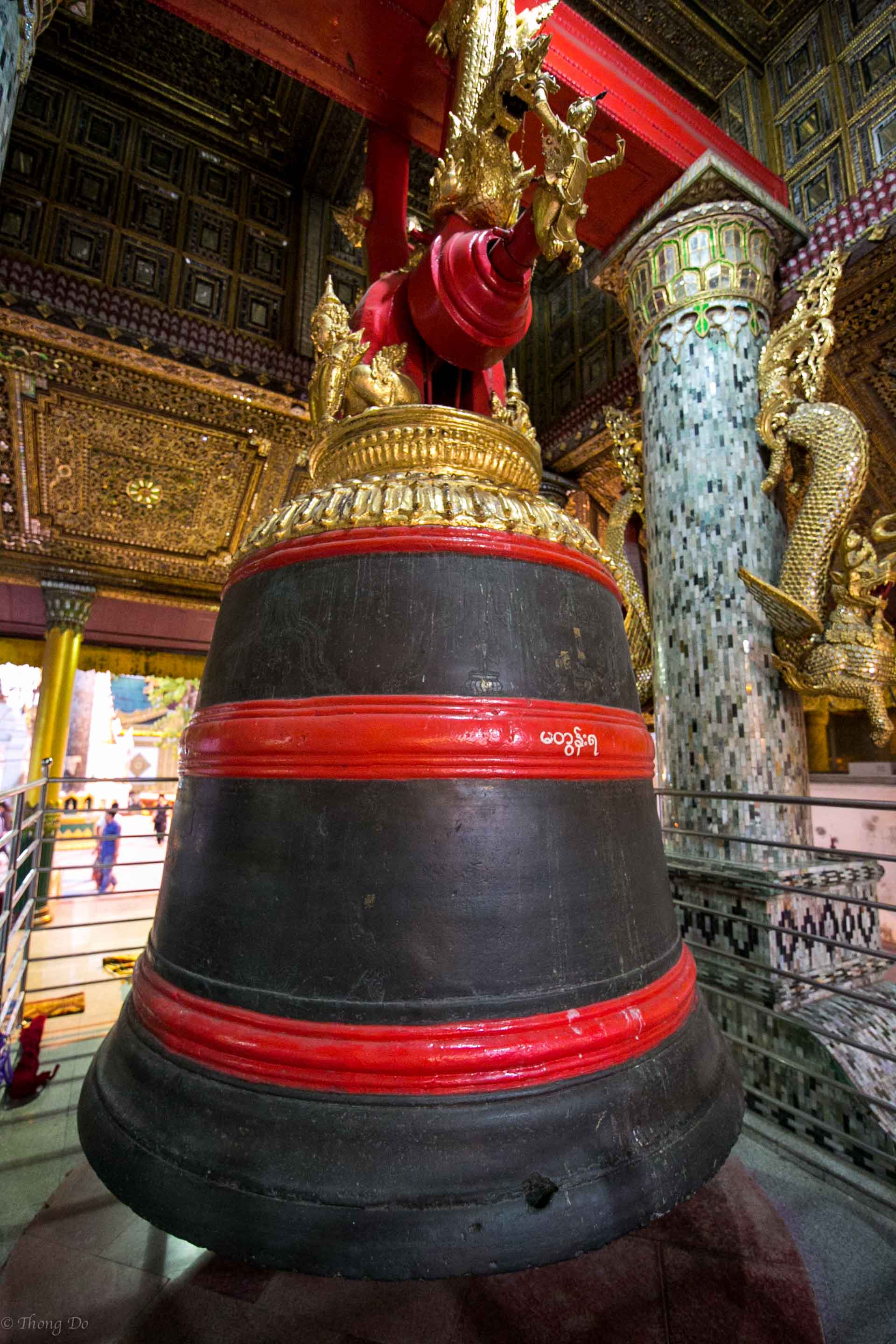
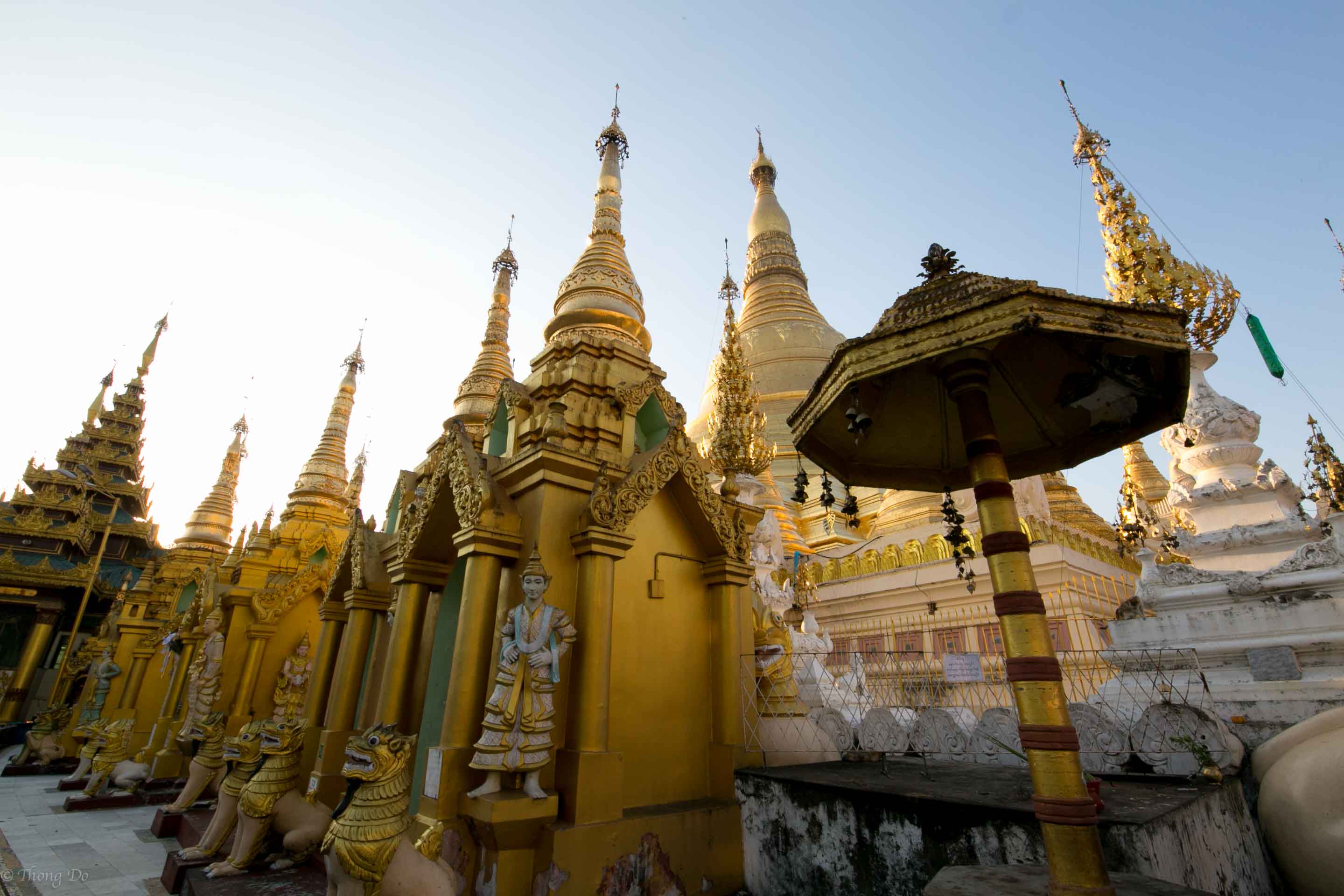

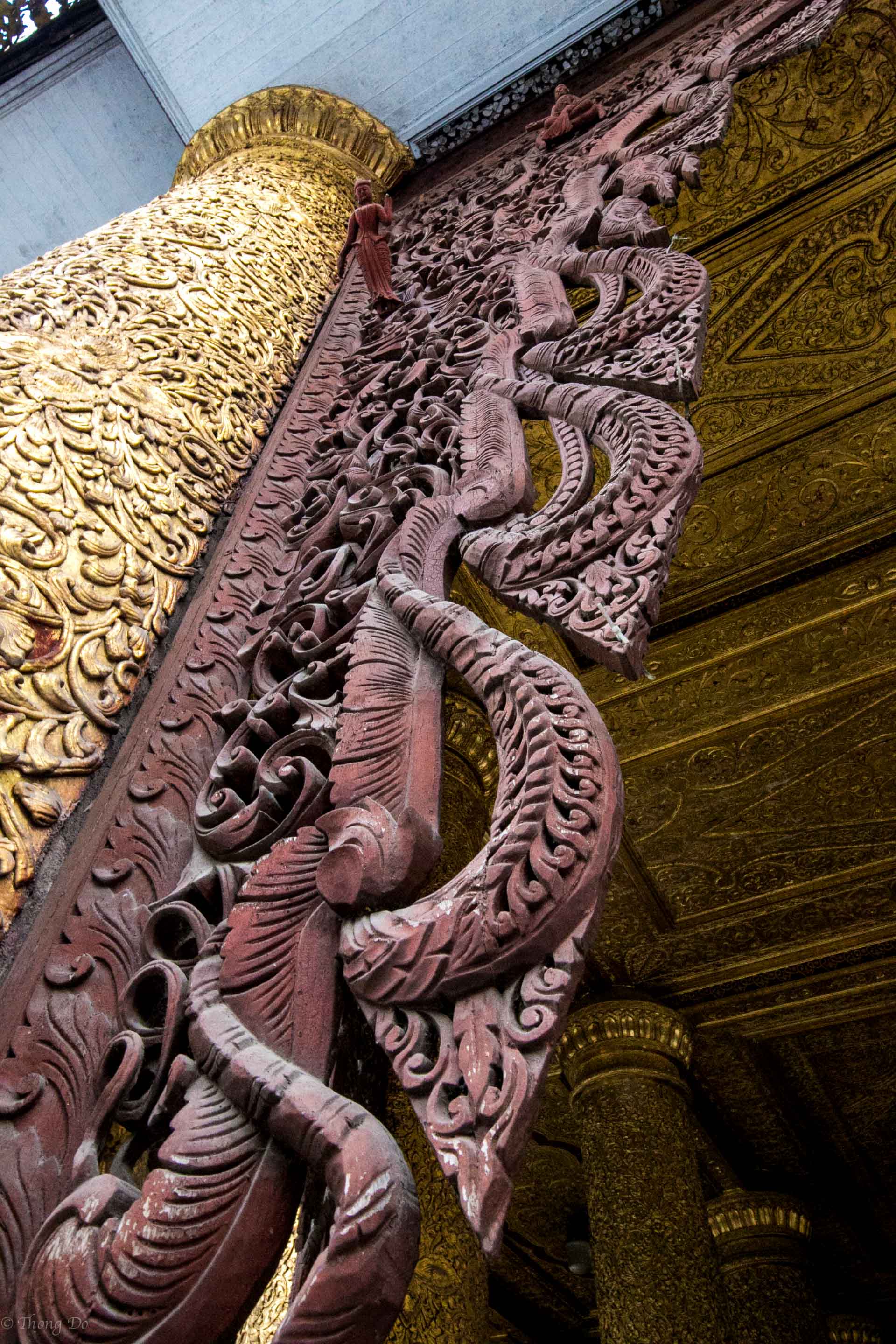

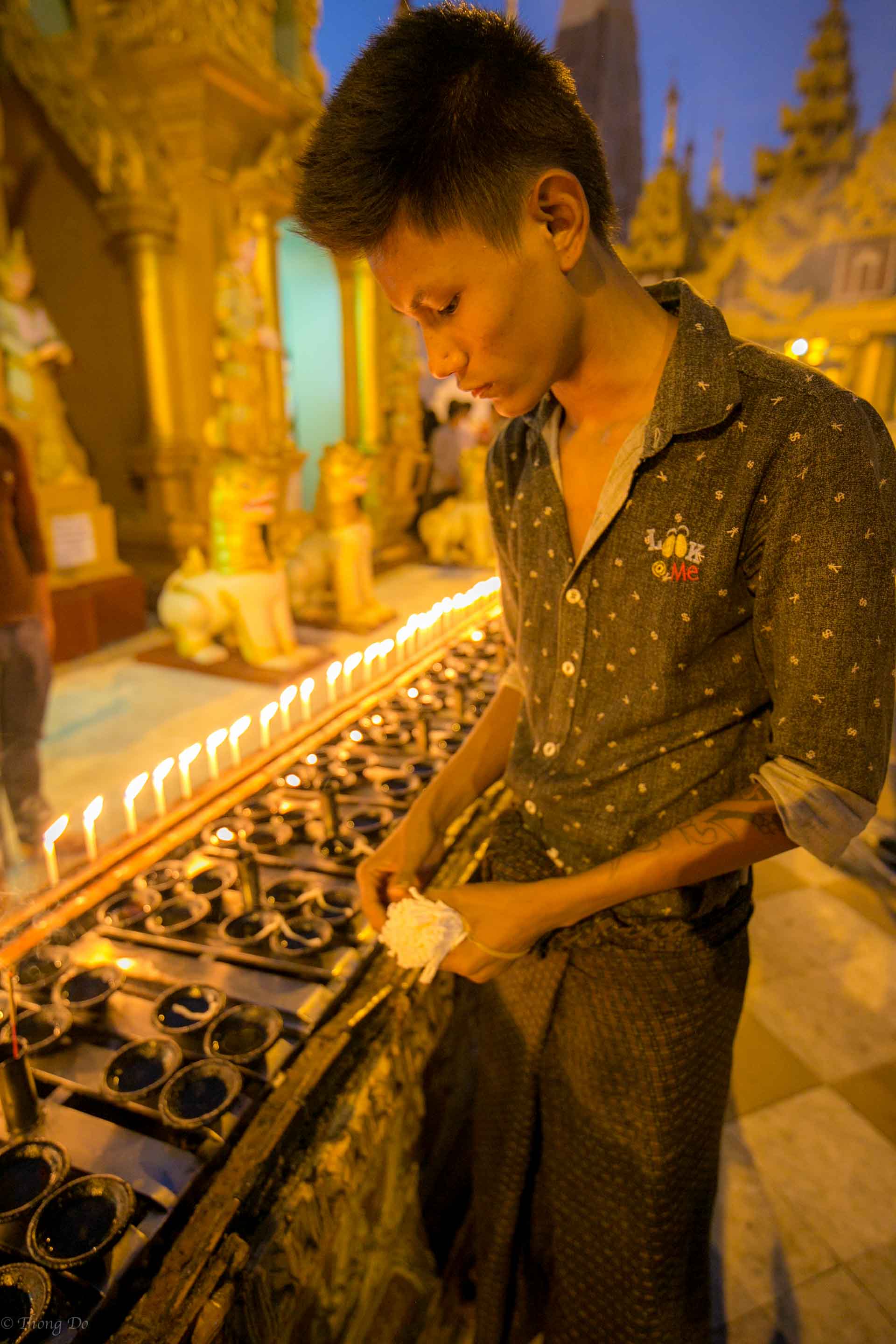
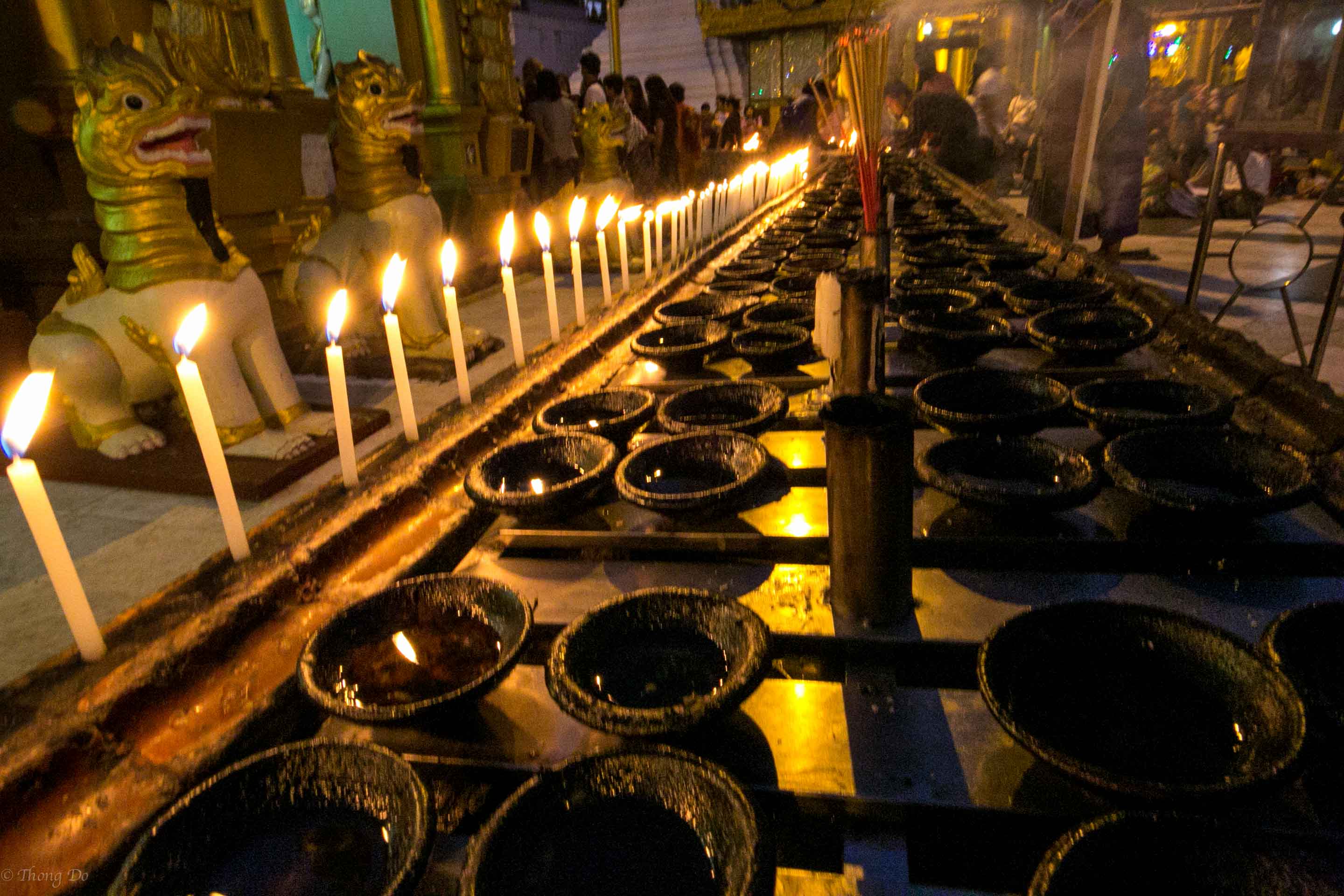
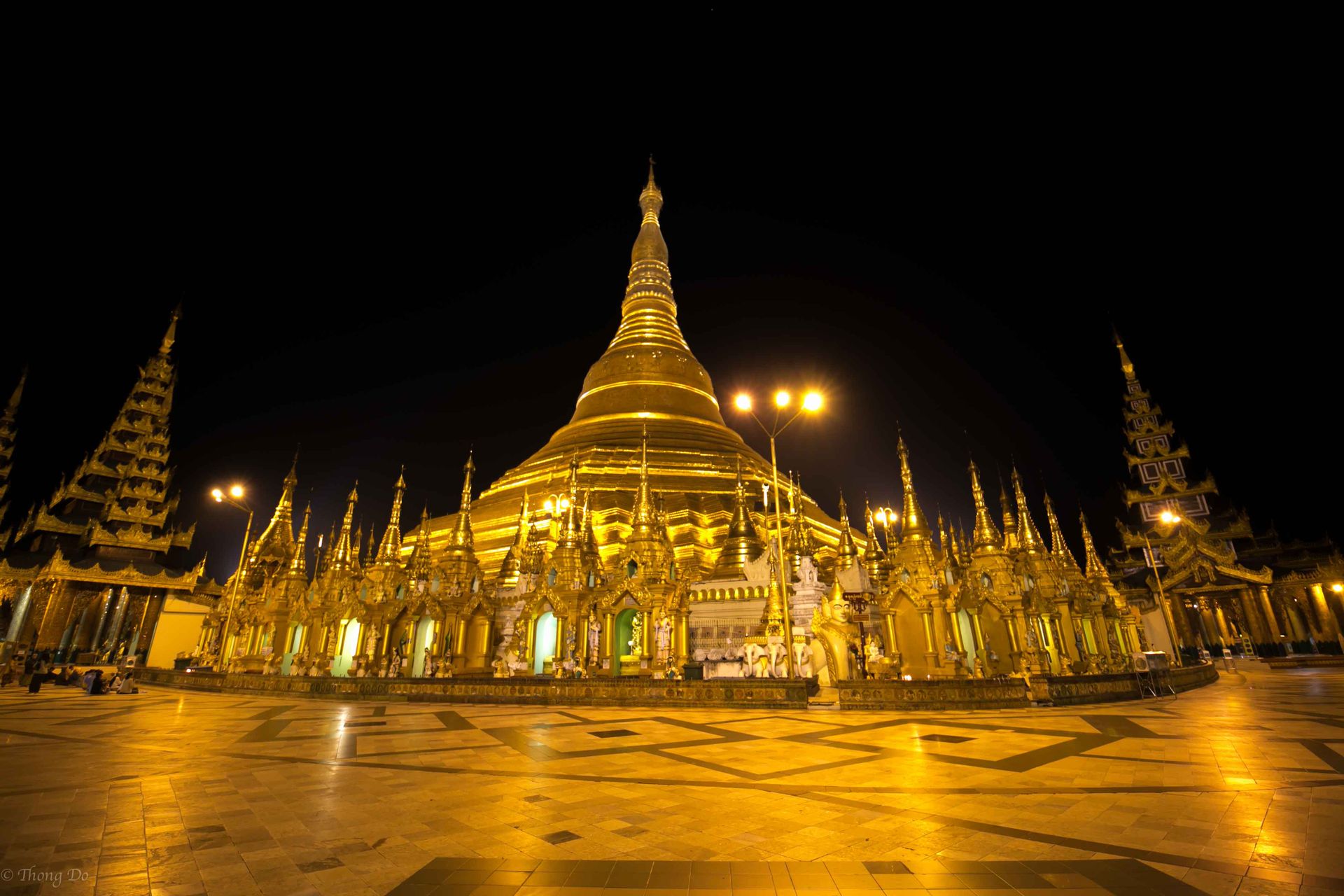
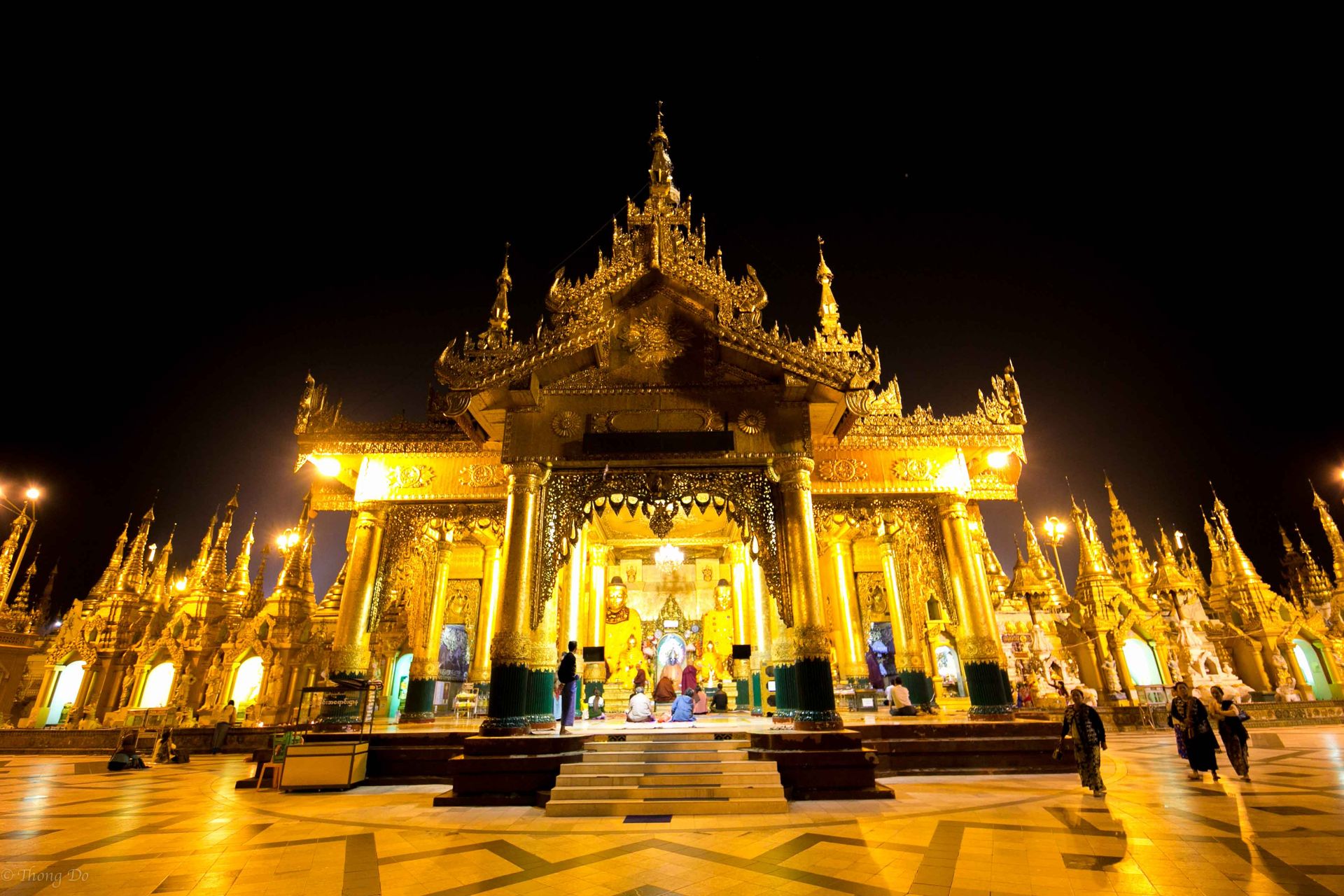
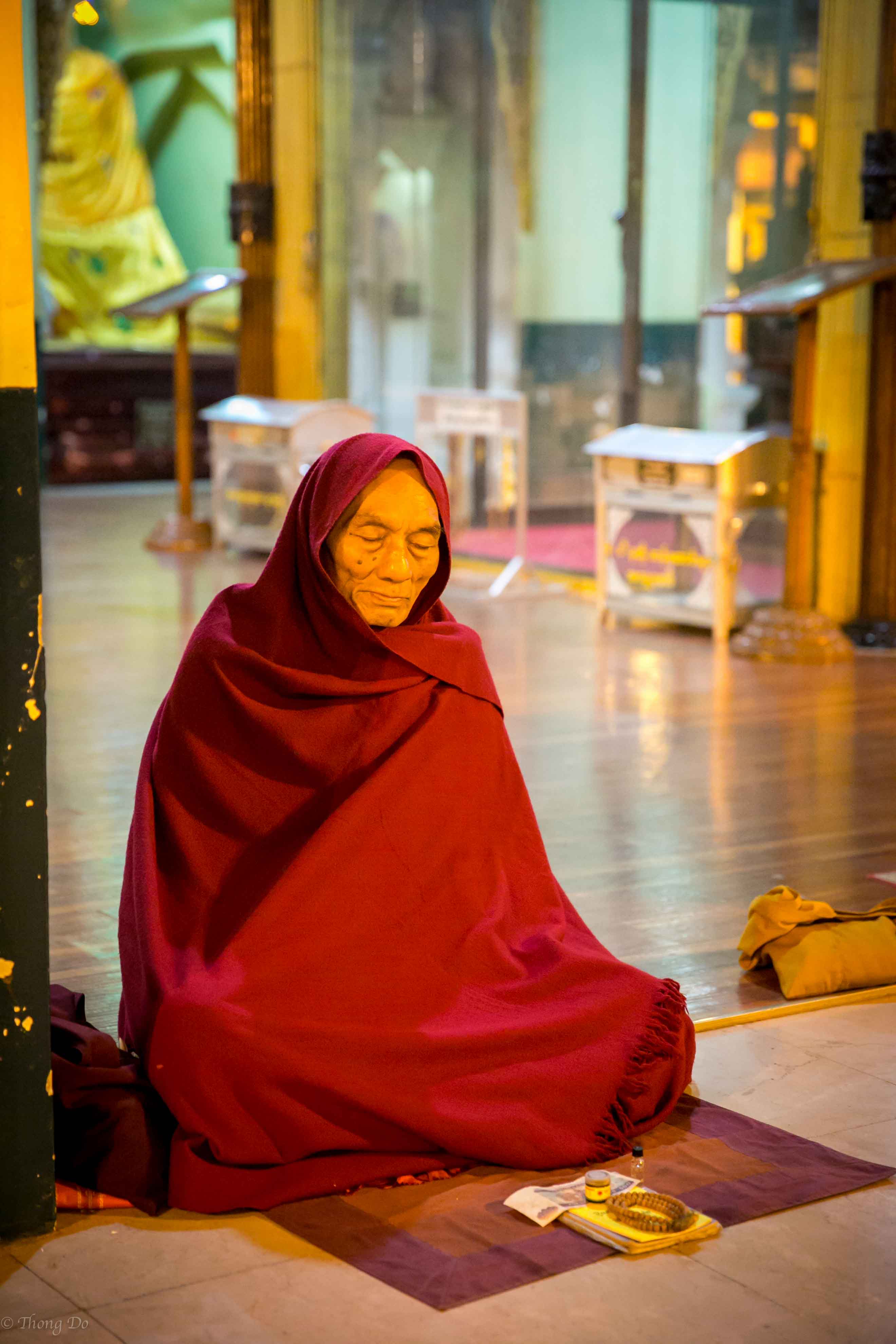
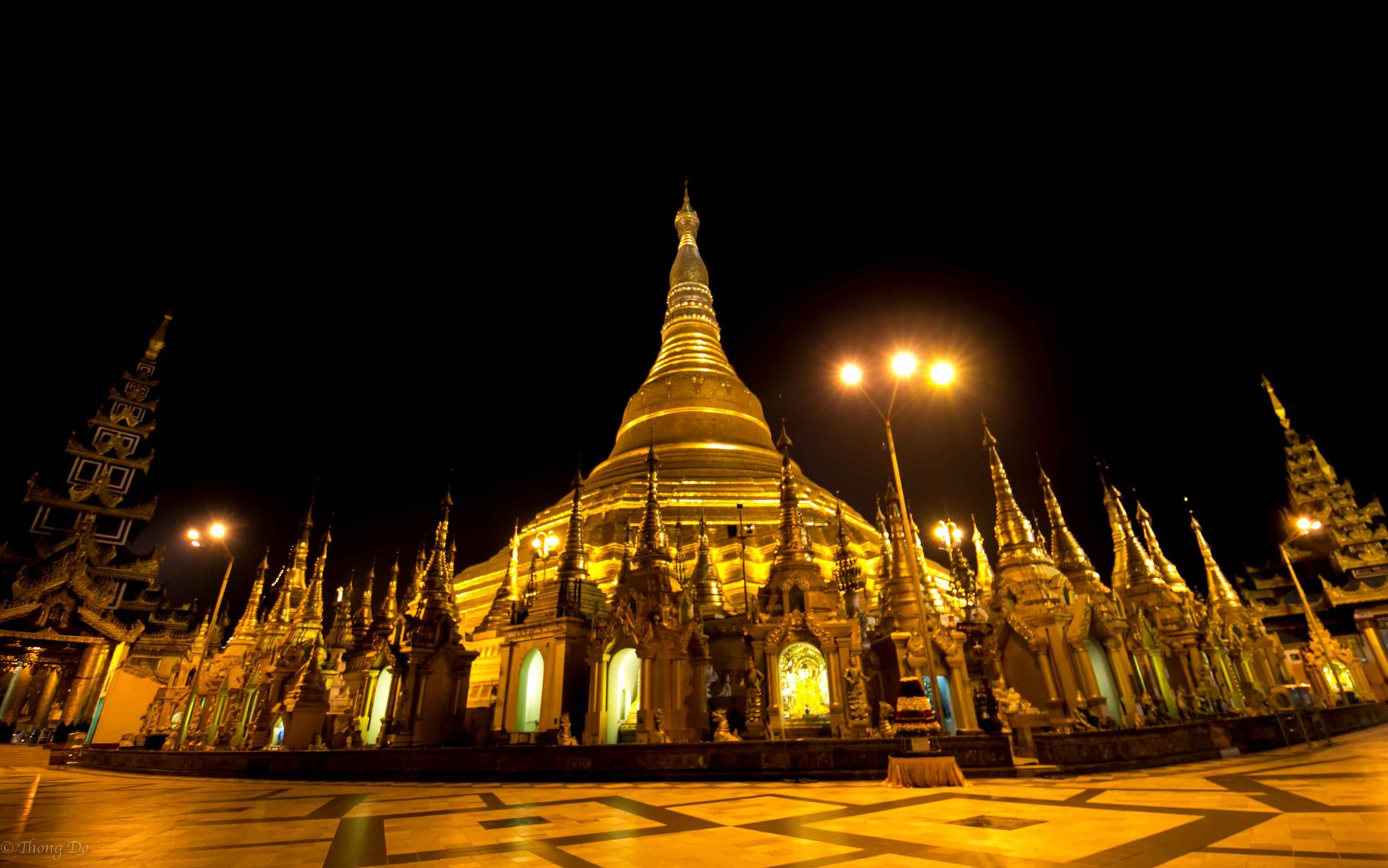
I have to say
there is a profound reason why this place is so revered by the Myanmar people
as well why this is one of the holiest sites to the Buddhist community. It is
spiritual and sensory overload when you come and visit this historic
complex. The attention to detail on the
statues and structures is eye popping and the overall spiritual vibe is
indescribable. You don’t even have to be
a Buddhist to appreciate the atmosphere here.
Be sure to visit this amazing place and leave a small donation too.
Happy traveling.
